Make Up For Ever Miscellaneous (Matte) Artist Color Shadows Reviews, Photos, Swatches
M536 Milk Tea
Make Up For Ever M536 Milk Tea Artist Color Shadow ($17.00 for 0.08 oz.) is a very light brown with soft, warm yellow undertones and a matte finish. The texture was velvety and smooth with a touch of dustiness in the pan. It had good color coverage that adhered well to bare skin. The eyeshadow lasted for nine hours on me before fading.
It’s lighter and yellower compared to the original (see side-by-side comparison).
FURTHER READING: Formula Overview for details on general performance and characteristics (like scent).
Top Dupes
- Too Faced Jingle All the Way Eyeshadow #11 (LE, $16.00) is lighter (95% similar).
- KVD Beauty Noble (LE, ) is darker (95% similar).
- ColourPop Send Noodles (PiP, $4.50) is lighter (95% similar).
- Urban Decay Levitation (LE, $19.00) is darker (95% similar).
- Give Me Glow Sandcastle (P, $7.00) is lighter, cooler (95% similar).
- Becca Ombre Rouge #1 (PiP, ) is warmer (95% similar).
- LORAC Butterscotch (LE, $19.00) is lighter (90% similar).
- Make Up For Ever M536 Milk Tea (DC, $21.00) is darker (90% similar).
- Wet 'n' Wild Walking on Eggshells #1 (PiP, ) is lighter, cooler (90% similar).
- Sydney Grace Camel (P, $5.25) is lighter, warmer (90% similar).
Formula Overview
$17.00/0.08 oz. - $212.50 Per Ounce
The original Artist Shadow formula had a creamier, slightly softer, and thicker feel for finishes like Metallic, Iridescent, and Satin, while I felt the original Diamond finish was denser/thicker (heavier almost) and the Matte finish was more powdery but similar in softness and pigmentation (I did not find the original Mattes to be ultra pigmented across the board--semi-opaque to opaque, buildable, which you can see in my original swatches here). By and large, I found the formula to be easy to work with and did not have to spend a lot of time blending or fussing with the shades on the lid.
The new Matte formula has a smoother consistency that has more slip to the touch with less powderiness in the pan, but the pigmentation did seem slightly weaker on average compared to the original formula. The pigmentation of the new Matte formula was still semi-opaque to opaque and buildable but I felt like there were just more shades that were closer to semi-opaque than to opaque.
However, shades like M402 Mimosa showed improvement, as it used to be a Satin (see here) and not as easy to work with due to the denser texture. A lot of the shades were similar in color between the formulas, but there were a few that were not (M546 Dark Purple Taupe was a shade with more significant changes; the new version is warmer and lighter).
Overall, I did not have any issues applying most of the matte shades to the lid, blending them out, or building up coverage. They lasted between nine and ten hours on me, which was actually a bit longer (on average) compared to the original formula, where the mattes tended to wear between seven and eight hours on me (without primer).
The new Satin formula was the most different; it had weaker pigmentation, felt denser and drier with less give and creaminess. In practice, I did not feel like application was harder or noticeably different other than feeling like more of the shades required two layers for more opaque coverage, though some of the more neutral shades were fairly pigmented in a single layer. I also noticed that this particular finish seemed to be the most culled; there weren't that many shades in it, and I wonder if they did not sell well or something about the finish is harder to produce.
There were significant differences in color (and/or undertone) between shades in the new formula and old formula (with the same names) within this finish, too, where most were different rather than only a handful being different. The pigmentation of the new Satin formula was typically semi-opaque and buildable, while they applied evenly, blended out without much effort, and lasted between eight and ten hours (without primer).
The new Iridescent formula was the second most different and more comparable to the Satin finish in terms of overall feel and performance, just with larger shimmer/micro-sparkle. The new formula has a denser consistency (almost "drier" and with less slip) and didn't feel as cream-like, but the powder seemed to pickup better with most brushes and was more consistent in the actual finish--pearly with sparkle--whereas the original formula varied more heavily between pearly and metallic, sparkle and finer shimmer.
There were, however, more substantial color and undertone differences between old and new within this formula, like I saw with the Satin formula. Overall, I did not experience any significant issues applying most of the shades to the lid--they were semi-opaque to opaque, fairly buildable, blendable, and long-wearing (eight to ten hours).
The new Metallic formula was the most consistent between old and new for overall feel, performance, and color. There were, of course, a few shades that seemed lighter/darker, cooler/warmer compared to the previous versions, and all those notes will be made within the respective shade's review. I think the new Metallic finish has a more flattering look on the lid, as the consistency wasn't quite as thick, which should make it apply and appear smoother on the lid for more people.
There were several shades that seemed slightly deeper or less reflective, while others were as reflective as past versions. The majority of the shades of this finish were very pigmented with a moderately dense, lightly creamy texture that blended out well on the lid and wore between nine and ten hours on me.
The new Diamond finish was noticeably less dense/thick, particularly on the lid, which did make it easier to spread across a larger area and easier to pickup with more types of brushes. I was worried that there would be more fallout, but I haven't noticeable much fallout with the new Diamond shades over the eight to ten hours they last for.
Most of them had good pigmentation, though there were a few that were weaker (medium to semi-opaque coverage); a shade like D410 Gold Nugget was a weaker shade before and still is while D326 Lagoon Blue is significantly less pigmented in the new formula.
As I typically do with new eyeshadow formulas, I tested a few shades from each finish over various primers, as I like to see how new formulas interact with different types of primers and if there are any unexpected consequences of using primers (I felt that some of the more silicone-heavy Artist Shadows from before actually applied better without primer).
I didn't notice any ill effects of using primers like Smashbox 24-Hour, Marc Jacobs Coconut Eye Primer, Too Faced Shadow Insurance, or Urban Decay Primer Potion. They all seemed to just help with wear, and with some of the shades that felt drier or had weaker pigmentation, the use of primer seemed to improve initial coverage levels, too.
Browse all of our Make Up For Ever Artist Color Shadow swatches.
Ingredients

M536 Milk Tea
PPermanent. $17.00.
M540 Gray Beige
Make Up For Ever M540 Gray Beige Artist Color Shadow ($17.00 for 0.08 oz.) is a light-medium taupe with subtle, olive undertone and a matte finish. It had good color payoff with a soft, smooth consistency that was easy to work with on the lid. The eyeshadow applied evenly and stayed on well for nine hours before starting to fade on me.
The previous version was much darker and warmer (see side-by-side comparison).
FURTHER READING: Formula Overview for details on general performance and characteristics (like scent).
Top Dupes
- Chanel Road Movie #4 (PiP, ) is darker (95% similar).
- MAC Gutter Gal (LE, $17.00) (90% similar).
- MAC Omega (LE, $17.00) is darker, warmer (90% similar).
- Laura Mercier Cappuccino (LE, $23.00) is warmer (90% similar).
- MAC Prissy Princess (LE, ) is darker, warmer (90% similar).
- Natasha Denona Lucy (464CM) (PiP, ) is warmer (90% similar).
- Sephora Mushroom (LE, ) is darker (90% similar).
- Sydney Grace Moon Landing (P, $5.25) is darker (85% similar).
- Give Me Glow Mushroom (P, $7.00) is darker, warmer (85% similar).
- MAC Soleil, So Lovely (LE, $17.00) is darker, warmer (85% similar).
Formula Overview
$17.00/0.08 oz. - $212.50 Per Ounce
The original Artist Shadow formula had a creamier, slightly softer, and thicker feel for finishes like Metallic, Iridescent, and Satin, while I felt the original Diamond finish was denser/thicker (heavier almost) and the Matte finish was more powdery but similar in softness and pigmentation (I did not find the original Mattes to be ultra pigmented across the board--semi-opaque to opaque, buildable, which you can see in my original swatches here). By and large, I found the formula to be easy to work with and did not have to spend a lot of time blending or fussing with the shades on the lid.
The new Matte formula has a smoother consistency that has more slip to the touch with less powderiness in the pan, but the pigmentation did seem slightly weaker on average compared to the original formula. The pigmentation of the new Matte formula was still semi-opaque to opaque and buildable but I felt like there were just more shades that were closer to semi-opaque than to opaque.
However, shades like M402 Mimosa showed improvement, as it used to be a Satin (see here) and not as easy to work with due to the denser texture. A lot of the shades were similar in color between the formulas, but there were a few that were not (M546 Dark Purple Taupe was a shade with more significant changes; the new version is warmer and lighter).
Overall, I did not have any issues applying most of the matte shades to the lid, blending them out, or building up coverage. They lasted between nine and ten hours on me, which was actually a bit longer (on average) compared to the original formula, where the mattes tended to wear between seven and eight hours on me (without primer).
The new Satin formula was the most different; it had weaker pigmentation, felt denser and drier with less give and creaminess. In practice, I did not feel like application was harder or noticeably different other than feeling like more of the shades required two layers for more opaque coverage, though some of the more neutral shades were fairly pigmented in a single layer. I also noticed that this particular finish seemed to be the most culled; there weren't that many shades in it, and I wonder if they did not sell well or something about the finish is harder to produce.
There were significant differences in color (and/or undertone) between shades in the new formula and old formula (with the same names) within this finish, too, where most were different rather than only a handful being different. The pigmentation of the new Satin formula was typically semi-opaque and buildable, while they applied evenly, blended out without much effort, and lasted between eight and ten hours (without primer).
The new Iridescent formula was the second most different and more comparable to the Satin finish in terms of overall feel and performance, just with larger shimmer/micro-sparkle. The new formula has a denser consistency (almost "drier" and with less slip) and didn't feel as cream-like, but the powder seemed to pickup better with most brushes and was more consistent in the actual finish--pearly with sparkle--whereas the original formula varied more heavily between pearly and metallic, sparkle and finer shimmer.
There were, however, more substantial color and undertone differences between old and new within this formula, like I saw with the Satin formula. Overall, I did not experience any significant issues applying most of the shades to the lid--they were semi-opaque to opaque, fairly buildable, blendable, and long-wearing (eight to ten hours).
The new Metallic formula was the most consistent between old and new for overall feel, performance, and color. There were, of course, a few shades that seemed lighter/darker, cooler/warmer compared to the previous versions, and all those notes will be made within the respective shade's review. I think the new Metallic finish has a more flattering look on the lid, as the consistency wasn't quite as thick, which should make it apply and appear smoother on the lid for more people.
There were several shades that seemed slightly deeper or less reflective, while others were as reflective as past versions. The majority of the shades of this finish were very pigmented with a moderately dense, lightly creamy texture that blended out well on the lid and wore between nine and ten hours on me.
The new Diamond finish was noticeably less dense/thick, particularly on the lid, which did make it easier to spread across a larger area and easier to pickup with more types of brushes. I was worried that there would be more fallout, but I haven't noticeable much fallout with the new Diamond shades over the eight to ten hours they last for.
Most of them had good pigmentation, though there were a few that were weaker (medium to semi-opaque coverage); a shade like D410 Gold Nugget was a weaker shade before and still is while D326 Lagoon Blue is significantly less pigmented in the new formula.
As I typically do with new eyeshadow formulas, I tested a few shades from each finish over various primers, as I like to see how new formulas interact with different types of primers and if there are any unexpected consequences of using primers (I felt that some of the more silicone-heavy Artist Shadows from before actually applied better without primer).
I didn't notice any ill effects of using primers like Smashbox 24-Hour, Marc Jacobs Coconut Eye Primer, Too Faced Shadow Insurance, or Urban Decay Primer Potion. They all seemed to just help with wear, and with some of the shades that felt drier or had weaker pigmentation, the use of primer seemed to improve initial coverage levels, too.
Browse all of our Make Up For Ever Artist Color Shadow swatches.
Ingredients

M540 Gray Beige
PPermanent. $17.00.
M549 Dark Taupe
Make Up For Ever M549 Dark Taupe Artist Color Shadow ($17.00 for 0.08 oz.) is a medium taupe with subtle, warm undertones and a matte finish. The pigmentation was nearly opaque in a single layer and buildable to full coverage with a second layer patted on top. The eyeshadow had a soft, velvety texture that had substance to it, so it applied well to bare skin and blended out with ease. It wore well for nine hours on me before fading.
FURTHER READING: Formula Overview for details on general performance and characteristics (like scent).
Top Dupes
- bareMinerals Vow (LE, ) is warmer (95% similar).
- Bobbi Brown Slate (P, $22.00) is darker (95% similar).
- MAC Nippy Taupe Dusk (LE, $17.00) is lighter (95% similar).
- ColourPop Celtic Pride (LE, $4.50) is lighter, warmer (95% similar).
- Make Up For Ever M548 Pink Gray (DC, $21.00) is lighter (95% similar).
- Charlotte Tilbury Smoky Taupe (P, $34.00) is warmer (95% similar).
- Terra Moons Decadent (P, $6.00) is cooler (90% similar).
- Anastasia B5 (Norvina Vol. 4) (LE, ) is cooler (90% similar).
- Dior Mirage (761) (P, $30.00) is lighter (90% similar).
- Tarte Profesh (PiP, ) is darker (90% similar).
Formula Overview
$17.00/0.08 oz. - $212.50 Per Ounce
The original Artist Shadow formula had a creamier, slightly softer, and thicker feel for finishes like Metallic, Iridescent, and Satin, while I felt the original Diamond finish was denser/thicker (heavier almost) and the Matte finish was more powdery but similar in softness and pigmentation (I did not find the original Mattes to be ultra pigmented across the board--semi-opaque to opaque, buildable, which you can see in my original swatches here). By and large, I found the formula to be easy to work with and did not have to spend a lot of time blending or fussing with the shades on the lid.
The new Matte formula has a smoother consistency that has more slip to the touch with less powderiness in the pan, but the pigmentation did seem slightly weaker on average compared to the original formula. The pigmentation of the new Matte formula was still semi-opaque to opaque and buildable but I felt like there were just more shades that were closer to semi-opaque than to opaque.
However, shades like M402 Mimosa showed improvement, as it used to be a Satin (see here) and not as easy to work with due to the denser texture. A lot of the shades were similar in color between the formulas, but there were a few that were not (M546 Dark Purple Taupe was a shade with more significant changes; the new version is warmer and lighter).
Overall, I did not have any issues applying most of the matte shades to the lid, blending them out, or building up coverage. They lasted between nine and ten hours on me, which was actually a bit longer (on average) compared to the original formula, where the mattes tended to wear between seven and eight hours on me (without primer).
The new Satin formula was the most different; it had weaker pigmentation, felt denser and drier with less give and creaminess. In practice, I did not feel like application was harder or noticeably different other than feeling like more of the shades required two layers for more opaque coverage, though some of the more neutral shades were fairly pigmented in a single layer. I also noticed that this particular finish seemed to be the most culled; there weren't that many shades in it, and I wonder if they did not sell well or something about the finish is harder to produce.
There were significant differences in color (and/or undertone) between shades in the new formula and old formula (with the same names) within this finish, too, where most were different rather than only a handful being different. The pigmentation of the new Satin formula was typically semi-opaque and buildable, while they applied evenly, blended out without much effort, and lasted between eight and ten hours (without primer).
The new Iridescent formula was the second most different and more comparable to the Satin finish in terms of overall feel and performance, just with larger shimmer/micro-sparkle. The new formula has a denser consistency (almost "drier" and with less slip) and didn't feel as cream-like, but the powder seemed to pickup better with most brushes and was more consistent in the actual finish--pearly with sparkle--whereas the original formula varied more heavily between pearly and metallic, sparkle and finer shimmer.
There were, however, more substantial color and undertone differences between old and new within this formula, like I saw with the Satin formula. Overall, I did not experience any significant issues applying most of the shades to the lid--they were semi-opaque to opaque, fairly buildable, blendable, and long-wearing (eight to ten hours).
The new Metallic formula was the most consistent between old and new for overall feel, performance, and color. There were, of course, a few shades that seemed lighter/darker, cooler/warmer compared to the previous versions, and all those notes will be made within the respective shade's review. I think the new Metallic finish has a more flattering look on the lid, as the consistency wasn't quite as thick, which should make it apply and appear smoother on the lid for more people.
There were several shades that seemed slightly deeper or less reflective, while others were as reflective as past versions. The majority of the shades of this finish were very pigmented with a moderately dense, lightly creamy texture that blended out well on the lid and wore between nine and ten hours on me.
The new Diamond finish was noticeably less dense/thick, particularly on the lid, which did make it easier to spread across a larger area and easier to pickup with more types of brushes. I was worried that there would be more fallout, but I haven't noticeable much fallout with the new Diamond shades over the eight to ten hours they last for.
Most of them had good pigmentation, though there were a few that were weaker (medium to semi-opaque coverage); a shade like D410 Gold Nugget was a weaker shade before and still is while D326 Lagoon Blue is significantly less pigmented in the new formula.
As I typically do with new eyeshadow formulas, I tested a few shades from each finish over various primers, as I like to see how new formulas interact with different types of primers and if there are any unexpected consequences of using primers (I felt that some of the more silicone-heavy Artist Shadows from before actually applied better without primer).
I didn't notice any ill effects of using primers like Smashbox 24-Hour, Marc Jacobs Coconut Eye Primer, Too Faced Shadow Insurance, or Urban Decay Primer Potion. They all seemed to just help with wear, and with some of the shades that felt drier or had weaker pigmentation, the use of primer seemed to improve initial coverage levels, too.
Browse all of our Make Up For Ever Artist Color Shadow swatches.
Ingredients

Look Using this Product
M549 Dark Taupe
PPermanent. $17.00.
M600 Pink Brown
Make Up For Ever M600 Pink Brown Artist Color Shadow ($17.00 for 0.08 oz.) is a muted, medium brown with warm, rosy undertones and a matte finish. The consistency was soft and blendable, though it was a little thinner compared to other shades in the formula, so it did not apply as evenly initially. I was able to diffuse and blend everything out without much work, though. It had good, buildable pigmentation that stayed on well for nine hours.
The previous version was a smidgen warmer (see side-by-side comparison).
FURTHER READING: Formula Overview for details on general performance and characteristics (like scent).
Top Dupes
- MAC Mabuhay (LE, $17.00) is darker (95% similar).
- Make Up For Ever M600 Pink Brown (DC, $21.00) is warmer (95% similar).
- Makeup Geek Bake Sale (DC, $6.00) is warmer (95% similar).
- Sephora Caramel (LE, ) is warmer (90% similar).
- Marc Jacobs Beauty For More (LE, ) is cooler (90% similar).
- Viseart Nutmeg (Warm Mattes #10) (P, ) is warmer (90% similar).
- Ciate On Fire (LE, ) is darker (90% similar).
- Sephora Auburn (LE, ) is warmer (90% similar).
- Juvia's Place Nubian #10 (P, ) is darker (85% similar).
- Urban Decay Not For Sale (LE, $19.00) is darker, warmer (85% similar).
Formula Overview
$17.00/0.08 oz. - $212.50 Per Ounce
The original Artist Shadow formula had a creamier, slightly softer, and thicker feel for finishes like Metallic, Iridescent, and Satin, while I felt the original Diamond finish was denser/thicker (heavier almost) and the Matte finish was more powdery but similar in softness and pigmentation (I did not find the original Mattes to be ultra pigmented across the board--semi-opaque to opaque, buildable, which you can see in my original swatches here). By and large, I found the formula to be easy to work with and did not have to spend a lot of time blending or fussing with the shades on the lid.
The new Matte formula has a smoother consistency that has more slip to the touch with less powderiness in the pan, but the pigmentation did seem slightly weaker on average compared to the original formula. The pigmentation of the new Matte formula was still semi-opaque to opaque and buildable but I felt like there were just more shades that were closer to semi-opaque than to opaque.
However, shades like M402 Mimosa showed improvement, as it used to be a Satin (see here) and not as easy to work with due to the denser texture. A lot of the shades were similar in color between the formulas, but there were a few that were not (M546 Dark Purple Taupe was a shade with more significant changes; the new version is warmer and lighter).
Overall, I did not have any issues applying most of the matte shades to the lid, blending them out, or building up coverage. They lasted between nine and ten hours on me, which was actually a bit longer (on average) compared to the original formula, where the mattes tended to wear between seven and eight hours on me (without primer).
The new Satin formula was the most different; it had weaker pigmentation, felt denser and drier with less give and creaminess. In practice, I did not feel like application was harder or noticeably different other than feeling like more of the shades required two layers for more opaque coverage, though some of the more neutral shades were fairly pigmented in a single layer. I also noticed that this particular finish seemed to be the most culled; there weren't that many shades in it, and I wonder if they did not sell well or something about the finish is harder to produce.
There were significant differences in color (and/or undertone) between shades in the new formula and old formula (with the same names) within this finish, too, where most were different rather than only a handful being different. The pigmentation of the new Satin formula was typically semi-opaque and buildable, while they applied evenly, blended out without much effort, and lasted between eight and ten hours (without primer).
The new Iridescent formula was the second most different and more comparable to the Satin finish in terms of overall feel and performance, just with larger shimmer/micro-sparkle. The new formula has a denser consistency (almost "drier" and with less slip) and didn't feel as cream-like, but the powder seemed to pickup better with most brushes and was more consistent in the actual finish--pearly with sparkle--whereas the original formula varied more heavily between pearly and metallic, sparkle and finer shimmer.
There were, however, more substantial color and undertone differences between old and new within this formula, like I saw with the Satin formula. Overall, I did not experience any significant issues applying most of the shades to the lid--they were semi-opaque to opaque, fairly buildable, blendable, and long-wearing (eight to ten hours).
The new Metallic formula was the most consistent between old and new for overall feel, performance, and color. There were, of course, a few shades that seemed lighter/darker, cooler/warmer compared to the previous versions, and all those notes will be made within the respective shade's review. I think the new Metallic finish has a more flattering look on the lid, as the consistency wasn't quite as thick, which should make it apply and appear smoother on the lid for more people.
There were several shades that seemed slightly deeper or less reflective, while others were as reflective as past versions. The majority of the shades of this finish were very pigmented with a moderately dense, lightly creamy texture that blended out well on the lid and wore between nine and ten hours on me.
The new Diamond finish was noticeably less dense/thick, particularly on the lid, which did make it easier to spread across a larger area and easier to pickup with more types of brushes. I was worried that there would be more fallout, but I haven't noticeable much fallout with the new Diamond shades over the eight to ten hours they last for.
Most of them had good pigmentation, though there were a few that were weaker (medium to semi-opaque coverage); a shade like D410 Gold Nugget was a weaker shade before and still is while D326 Lagoon Blue is significantly less pigmented in the new formula.
As I typically do with new eyeshadow formulas, I tested a few shades from each finish over various primers, as I like to see how new formulas interact with different types of primers and if there are any unexpected consequences of using primers (I felt that some of the more silicone-heavy Artist Shadows from before actually applied better without primer).
I didn't notice any ill effects of using primers like Smashbox 24-Hour, Marc Jacobs Coconut Eye Primer, Too Faced Shadow Insurance, or Urban Decay Primer Potion. They all seemed to just help with wear, and with some of the shades that felt drier or had weaker pigmentation, the use of primer seemed to improve initial coverage levels, too.
Browse all of our Make Up For Ever Artist Color Shadow swatches.
Ingredients

M600 Pink Brown
PPermanent. $17.00.
M603 Cinnamon
Make Up For Ever M603 Cinnamon Artist Color Shadow ($17.00 for 0.08 oz.) is a medium brown with warm undertones and a matte finish. It had rich color coverage in a single layer paired with a smooth, velvety texture that had enough substance to be easy to work with on bare skin (thinner mattes often require primer or else they don’t blend out well). This shade wore well for nine hours on me before I noticed signs of fading.
The previous version was a Satin finish, so it had more of a sheen, and it was significantly lighter and warmer with orange undertones (see side-by-side comparison).
FURTHER READING: Formula Overview for details on general performance and characteristics (like scent).
Top Dupes
- Ciate On Fire (LE, ) is darker (95% similar).
- Wet 'n' Wild Not a Basic Peach #1 (PiP, ) is darker (95% similar).
- Kaja Flaming Sunset (PiP, ) is darker (95% similar).
- Urban Decay 7 and 7 (LE, $19.00) is warmer (90% similar).
- ColourPop Herd to Get (LE, $4.50) is darker (90% similar).
- Anastasia Realgar (P, $12.00) is cooler (90% similar).
- Anastasia Brick (P, $12.00) is darker (90% similar).
- ColourPop Blink (LE, $4.50) is brighter (90% similar).
- ColourPop Top Notch (P, $4.50) is cooler (90% similar).
- Sydney Grace Hot Chocolate (P, $5.25) is cooler (90% similar).
Formula Overview
$17.00/0.08 oz. - $212.50 Per Ounce
The original Artist Shadow formula had a creamier, slightly softer, and thicker feel for finishes like Metallic, Iridescent, and Satin, while I felt the original Diamond finish was denser/thicker (heavier almost) and the Matte finish was more powdery but similar in softness and pigmentation (I did not find the original Mattes to be ultra pigmented across the board--semi-opaque to opaque, buildable, which you can see in my original swatches here). By and large, I found the formula to be easy to work with and did not have to spend a lot of time blending or fussing with the shades on the lid.
The new Matte formula has a smoother consistency that has more slip to the touch with less powderiness in the pan, but the pigmentation did seem slightly weaker on average compared to the original formula. The pigmentation of the new Matte formula was still semi-opaque to opaque and buildable but I felt like there were just more shades that were closer to semi-opaque than to opaque.
However, shades like M402 Mimosa showed improvement, as it used to be a Satin (see here) and not as easy to work with due to the denser texture. A lot of the shades were similar in color between the formulas, but there were a few that were not (M546 Dark Purple Taupe was a shade with more significant changes; the new version is warmer and lighter).
Overall, I did not have any issues applying most of the matte shades to the lid, blending them out, or building up coverage. They lasted between nine and ten hours on me, which was actually a bit longer (on average) compared to the original formula, where the mattes tended to wear between seven and eight hours on me (without primer).
The new Satin formula was the most different; it had weaker pigmentation, felt denser and drier with less give and creaminess. In practice, I did not feel like application was harder or noticeably different other than feeling like more of the shades required two layers for more opaque coverage, though some of the more neutral shades were fairly pigmented in a single layer. I also noticed that this particular finish seemed to be the most culled; there weren't that many shades in it, and I wonder if they did not sell well or something about the finish is harder to produce.
There were significant differences in color (and/or undertone) between shades in the new formula and old formula (with the same names) within this finish, too, where most were different rather than only a handful being different. The pigmentation of the new Satin formula was typically semi-opaque and buildable, while they applied evenly, blended out without much effort, and lasted between eight and ten hours (without primer).
The new Iridescent formula was the second most different and more comparable to the Satin finish in terms of overall feel and performance, just with larger shimmer/micro-sparkle. The new formula has a denser consistency (almost "drier" and with less slip) and didn't feel as cream-like, but the powder seemed to pickup better with most brushes and was more consistent in the actual finish--pearly with sparkle--whereas the original formula varied more heavily between pearly and metallic, sparkle and finer shimmer.
There were, however, more substantial color and undertone differences between old and new within this formula, like I saw with the Satin formula. Overall, I did not experience any significant issues applying most of the shades to the lid--they were semi-opaque to opaque, fairly buildable, blendable, and long-wearing (eight to ten hours).
The new Metallic formula was the most consistent between old and new for overall feel, performance, and color. There were, of course, a few shades that seemed lighter/darker, cooler/warmer compared to the previous versions, and all those notes will be made within the respective shade's review. I think the new Metallic finish has a more flattering look on the lid, as the consistency wasn't quite as thick, which should make it apply and appear smoother on the lid for more people.
There were several shades that seemed slightly deeper or less reflective, while others were as reflective as past versions. The majority of the shades of this finish were very pigmented with a moderately dense, lightly creamy texture that blended out well on the lid and wore between nine and ten hours on me.
The new Diamond finish was noticeably less dense/thick, particularly on the lid, which did make it easier to spread across a larger area and easier to pickup with more types of brushes. I was worried that there would be more fallout, but I haven't noticeable much fallout with the new Diamond shades over the eight to ten hours they last for.
Most of them had good pigmentation, though there were a few that were weaker (medium to semi-opaque coverage); a shade like D410 Gold Nugget was a weaker shade before and still is while D326 Lagoon Blue is significantly less pigmented in the new formula.
As I typically do with new eyeshadow formulas, I tested a few shades from each finish over various primers, as I like to see how new formulas interact with different types of primers and if there are any unexpected consequences of using primers (I felt that some of the more silicone-heavy Artist Shadows from before actually applied better without primer).
I didn't notice any ill effects of using primers like Smashbox 24-Hour, Marc Jacobs Coconut Eye Primer, Too Faced Shadow Insurance, or Urban Decay Primer Potion. They all seemed to just help with wear, and with some of the shades that felt drier or had weaker pigmentation, the use of primer seemed to improve initial coverage levels, too.
Browse all of our Make Up For Ever Artist Color Shadow swatches.
Ingredients

M603 Cinnamon
PPermanent. $17.00.
M619 Espresso
Make Up For Ever M619 Espresso Artist Color Shadow ($17.00 for 0.08 oz.) is a medium-dark taupe-brown with neutral-to-cool undertones and a matte finish. It had semi-opaque, buildable pigmentation with a soft, lightly dusty texture that was blendable and fairly easy to use on the lid. The eyeshadow started to fade on me after nine hours of wear.
FURTHER READING: Formula Overview for details on general performance and characteristics (like scent).
Top Dupes
- Persona Maverick (PiP, ) is lighter, cooler (95% similar).
- NARS Bali (DC, $25.00) is lighter, cooler (95% similar).
- Too Faced Sexspresso (PiP, $16.00) is lighter, cooler (95% similar).
- Natasha Denona Seed (224CM) (PiP, ) is lighter (95% similar).
- Too Faced Sexspresso (PiP, $16.00) is cooler (95% similar).
- Chanel Deep #3 (PiP, ) is brighter (95% similar).
- MAC Influential (LE, $17.00) is cooler (95% similar).
- NARS Bali (DC, $25.00) is lighter (95% similar).
- Milani After Hours (PiP, $5.99) is darker (95% similar).
- Anastasia Mercury (DC, $12.00) is cooler (95% similar).
Formula Overview
$17.00/0.08 oz. - $212.50 Per Ounce
The original Artist Shadow formula had a creamier, slightly softer, and thicker feel for finishes like Metallic, Iridescent, and Satin, while I felt the original Diamond finish was denser/thicker (heavier almost) and the Matte finish was more powdery but similar in softness and pigmentation (I did not find the original Mattes to be ultra pigmented across the board--semi-opaque to opaque, buildable, which you can see in my original swatches here). By and large, I found the formula to be easy to work with and did not have to spend a lot of time blending or fussing with the shades on the lid.
The new Matte formula has a smoother consistency that has more slip to the touch with less powderiness in the pan, but the pigmentation did seem slightly weaker on average compared to the original formula. The pigmentation of the new Matte formula was still semi-opaque to opaque and buildable but I felt like there were just more shades that were closer to semi-opaque than to opaque.
However, shades like M402 Mimosa showed improvement, as it used to be a Satin (see here) and not as easy to work with due to the denser texture. A lot of the shades were similar in color between the formulas, but there were a few that were not (M546 Dark Purple Taupe was a shade with more significant changes; the new version is warmer and lighter).
Overall, I did not have any issues applying most of the matte shades to the lid, blending them out, or building up coverage. They lasted between nine and ten hours on me, which was actually a bit longer (on average) compared to the original formula, where the mattes tended to wear between seven and eight hours on me (without primer).
The new Satin formula was the most different; it had weaker pigmentation, felt denser and drier with less give and creaminess. In practice, I did not feel like application was harder or noticeably different other than feeling like more of the shades required two layers for more opaque coverage, though some of the more neutral shades were fairly pigmented in a single layer. I also noticed that this particular finish seemed to be the most culled; there weren't that many shades in it, and I wonder if they did not sell well or something about the finish is harder to produce.
There were significant differences in color (and/or undertone) between shades in the new formula and old formula (with the same names) within this finish, too, where most were different rather than only a handful being different. The pigmentation of the new Satin formula was typically semi-opaque and buildable, while they applied evenly, blended out without much effort, and lasted between eight and ten hours (without primer).
The new Iridescent formula was the second most different and more comparable to the Satin finish in terms of overall feel and performance, just with larger shimmer/micro-sparkle. The new formula has a denser consistency (almost "drier" and with less slip) and didn't feel as cream-like, but the powder seemed to pickup better with most brushes and was more consistent in the actual finish--pearly with sparkle--whereas the original formula varied more heavily between pearly and metallic, sparkle and finer shimmer.
There were, however, more substantial color and undertone differences between old and new within this formula, like I saw with the Satin formula. Overall, I did not experience any significant issues applying most of the shades to the lid--they were semi-opaque to opaque, fairly buildable, blendable, and long-wearing (eight to ten hours).
The new Metallic formula was the most consistent between old and new for overall feel, performance, and color. There were, of course, a few shades that seemed lighter/darker, cooler/warmer compared to the previous versions, and all those notes will be made within the respective shade's review. I think the new Metallic finish has a more flattering look on the lid, as the consistency wasn't quite as thick, which should make it apply and appear smoother on the lid for more people.
There were several shades that seemed slightly deeper or less reflective, while others were as reflective as past versions. The majority of the shades of this finish were very pigmented with a moderately dense, lightly creamy texture that blended out well on the lid and wore between nine and ten hours on me.
The new Diamond finish was noticeably less dense/thick, particularly on the lid, which did make it easier to spread across a larger area and easier to pickup with more types of brushes. I was worried that there would be more fallout, but I haven't noticeable much fallout with the new Diamond shades over the eight to ten hours they last for.
Most of them had good pigmentation, though there were a few that were weaker (medium to semi-opaque coverage); a shade like D410 Gold Nugget was a weaker shade before and still is while D326 Lagoon Blue is significantly less pigmented in the new formula.
As I typically do with new eyeshadow formulas, I tested a few shades from each finish over various primers, as I like to see how new formulas interact with different types of primers and if there are any unexpected consequences of using primers (I felt that some of the more silicone-heavy Artist Shadows from before actually applied better without primer).
I didn't notice any ill effects of using primers like Smashbox 24-Hour, Marc Jacobs Coconut Eye Primer, Too Faced Shadow Insurance, or Urban Decay Primer Potion. They all seemed to just help with wear, and with some of the shades that felt drier or had weaker pigmentation, the use of primer seemed to improve initial coverage levels, too.
Browse all of our Make Up For Ever Artist Color Shadow swatches.
Ingredients

M619 Espresso
PPermanent. $17.00.
M631 Cappuccino
Make Up For Ever M631 Cappuccino Artist Color Shadow ($17.00 for 0.08 oz.) is a light-medium brown with warm, golden undertones and a matte finish. The consistency was smooth and velvety without being powdery, so it adhered evenly to bare skin but still blended out with ease. It had rich color payoff that stayed on well for nine and a half hours of wear.
The previous version was lighter and much warmer (see side-by-side comparison).
FURTHER READING: Formula Overview for details on general performance and characteristics (like scent).
Top Dupes
- Marc Jacobs Beauty We'll See (PiP, ) is warmer (95% similar).
- Marc Jacobs Beauty Seeking (PiP, ) is darker, warmer (95% similar).
- Urban Decay Fix (LE, $19.00) is lighter (95% similar).
- NARS Bengali (P, $19.00) is cooler (95% similar).
- LORAC Mocha (Mega Pro 4) (LE, $19.00) is warmer (90% similar).
- Natasha Denona Zand (189CM) (PiP, ) is lighter, brighter (90% similar).
- Viseart Grande Pro (Vol. 1) #8 (LE, ) is warmer (90% similar).
- Sephora + Pantone Universe Carob Brown (LE, ) is warmer (90% similar).
- Smashbox Publisher (PiP, ) is lighter (90% similar).
- Tarte Wanderer (LE, ) is lighter (90% similar).
Formula Overview
$17.00/0.08 oz. - $212.50 Per Ounce
The original Artist Shadow formula had a creamier, slightly softer, and thicker feel for finishes like Metallic, Iridescent, and Satin, while I felt the original Diamond finish was denser/thicker (heavier almost) and the Matte finish was more powdery but similar in softness and pigmentation (I did not find the original Mattes to be ultra pigmented across the board--semi-opaque to opaque, buildable, which you can see in my original swatches here). By and large, I found the formula to be easy to work with and did not have to spend a lot of time blending or fussing with the shades on the lid.
The new Matte formula has a smoother consistency that has more slip to the touch with less powderiness in the pan, but the pigmentation did seem slightly weaker on average compared to the original formula. The pigmentation of the new Matte formula was still semi-opaque to opaque and buildable but I felt like there were just more shades that were closer to semi-opaque than to opaque.
However, shades like M402 Mimosa showed improvement, as it used to be a Satin (see here) and not as easy to work with due to the denser texture. A lot of the shades were similar in color between the formulas, but there were a few that were not (M546 Dark Purple Taupe was a shade with more significant changes; the new version is warmer and lighter).
Overall, I did not have any issues applying most of the matte shades to the lid, blending them out, or building up coverage. They lasted between nine and ten hours on me, which was actually a bit longer (on average) compared to the original formula, where the mattes tended to wear between seven and eight hours on me (without primer).
The new Satin formula was the most different; it had weaker pigmentation, felt denser and drier with less give and creaminess. In practice, I did not feel like application was harder or noticeably different other than feeling like more of the shades required two layers for more opaque coverage, though some of the more neutral shades were fairly pigmented in a single layer. I also noticed that this particular finish seemed to be the most culled; there weren't that many shades in it, and I wonder if they did not sell well or something about the finish is harder to produce.
There were significant differences in color (and/or undertone) between shades in the new formula and old formula (with the same names) within this finish, too, where most were different rather than only a handful being different. The pigmentation of the new Satin formula was typically semi-opaque and buildable, while they applied evenly, blended out without much effort, and lasted between eight and ten hours (without primer).
The new Iridescent formula was the second most different and more comparable to the Satin finish in terms of overall feel and performance, just with larger shimmer/micro-sparkle. The new formula has a denser consistency (almost "drier" and with less slip) and didn't feel as cream-like, but the powder seemed to pickup better with most brushes and was more consistent in the actual finish--pearly with sparkle--whereas the original formula varied more heavily between pearly and metallic, sparkle and finer shimmer.
There were, however, more substantial color and undertone differences between old and new within this formula, like I saw with the Satin formula. Overall, I did not experience any significant issues applying most of the shades to the lid--they were semi-opaque to opaque, fairly buildable, blendable, and long-wearing (eight to ten hours).
The new Metallic formula was the most consistent between old and new for overall feel, performance, and color. There were, of course, a few shades that seemed lighter/darker, cooler/warmer compared to the previous versions, and all those notes will be made within the respective shade's review. I think the new Metallic finish has a more flattering look on the lid, as the consistency wasn't quite as thick, which should make it apply and appear smoother on the lid for more people.
There were several shades that seemed slightly deeper or less reflective, while others were as reflective as past versions. The majority of the shades of this finish were very pigmented with a moderately dense, lightly creamy texture that blended out well on the lid and wore between nine and ten hours on me.
The new Diamond finish was noticeably less dense/thick, particularly on the lid, which did make it easier to spread across a larger area and easier to pickup with more types of brushes. I was worried that there would be more fallout, but I haven't noticeable much fallout with the new Diamond shades over the eight to ten hours they last for.
Most of them had good pigmentation, though there were a few that were weaker (medium to semi-opaque coverage); a shade like D410 Gold Nugget was a weaker shade before and still is while D326 Lagoon Blue is significantly less pigmented in the new formula.
As I typically do with new eyeshadow formulas, I tested a few shades from each finish over various primers, as I like to see how new formulas interact with different types of primers and if there are any unexpected consequences of using primers (I felt that some of the more silicone-heavy Artist Shadows from before actually applied better without primer).
I didn't notice any ill effects of using primers like Smashbox 24-Hour, Marc Jacobs Coconut Eye Primer, Too Faced Shadow Insurance, or Urban Decay Primer Potion. They all seemed to just help with wear, and with some of the shades that felt drier or had weaker pigmentation, the use of primer seemed to improve initial coverage levels, too.
Browse all of our Make Up For Ever Artist Color Shadow swatches.
Ingredients

M631 Cappuccino
PPermanent. $17.00.
M647 Speculoos
Make Up For Ever M647 Speculoos Artist Color Shadow ($17.00 for 0.08 oz.) is a light brown with warm, golden undertones and a matte finish. It had nearly opaque pigmentation in a single layer, which was buildable to full coverage with a second layer. The eyeshadow felt smooth to the touch without being powdery. It applied well to bare skin, blended out with ease, and lasted for nine hours on me.
The previous version was darker, warmer, and richer overall (see side-by-side comparison).
FURTHER READING: Formula Overview for details on general performance and characteristics (like scent).
Top Dupes
- Fenty Beauty Take Cover (PiP, ) is cooler (95% similar).
- Wet 'n' Wild Mythicool Creatures #1 (LE, ) is lighter (95% similar).
- NABLA Cosmetics Deja Vu (PiP, ) is darker, cooler (95% similar).
- Sydney Grace Toffee (P, $5.25) is lighter (95% similar).
- KVD Beauty Sage (Base) (PiP, ) is lighter (95% similar).
- NYX Tryst (P, $4.50) is darker (95% similar).
- Natasha Denona Atik (117CM) #2 (PiP, ) is cooler (95% similar).
- Viseart Warm Mattes #3 (PiP, ) is warmer (95% similar).
- Urban Decay Sly (LE, $19.00) is darker (95% similar).
- ColourPop The Taurus (P, $4.50) is brighter (95% similar).
Formula Overview
$17.00/0.08 oz. - $212.50 Per Ounce
The original Artist Shadow formula had a creamier, slightly softer, and thicker feel for finishes like Metallic, Iridescent, and Satin, while I felt the original Diamond finish was denser/thicker (heavier almost) and the Matte finish was more powdery but similar in softness and pigmentation (I did not find the original Mattes to be ultra pigmented across the board--semi-opaque to opaque, buildable, which you can see in my original swatches here). By and large, I found the formula to be easy to work with and did not have to spend a lot of time blending or fussing with the shades on the lid.
The new Matte formula has a smoother consistency that has more slip to the touch with less powderiness in the pan, but the pigmentation did seem slightly weaker on average compared to the original formula. The pigmentation of the new Matte formula was still semi-opaque to opaque and buildable but I felt like there were just more shades that were closer to semi-opaque than to opaque.
However, shades like M402 Mimosa showed improvement, as it used to be a Satin (see here) and not as easy to work with due to the denser texture. A lot of the shades were similar in color between the formulas, but there were a few that were not (M546 Dark Purple Taupe was a shade with more significant changes; the new version is warmer and lighter).
Overall, I did not have any issues applying most of the matte shades to the lid, blending them out, or building up coverage. They lasted between nine and ten hours on me, which was actually a bit longer (on average) compared to the original formula, where the mattes tended to wear between seven and eight hours on me (without primer).
The new Satin formula was the most different; it had weaker pigmentation, felt denser and drier with less give and creaminess. In practice, I did not feel like application was harder or noticeably different other than feeling like more of the shades required two layers for more opaque coverage, though some of the more neutral shades were fairly pigmented in a single layer. I also noticed that this particular finish seemed to be the most culled; there weren't that many shades in it, and I wonder if they did not sell well or something about the finish is harder to produce.
There were significant differences in color (and/or undertone) between shades in the new formula and old formula (with the same names) within this finish, too, where most were different rather than only a handful being different. The pigmentation of the new Satin formula was typically semi-opaque and buildable, while they applied evenly, blended out without much effort, and lasted between eight and ten hours (without primer).
The new Iridescent formula was the second most different and more comparable to the Satin finish in terms of overall feel and performance, just with larger shimmer/micro-sparkle. The new formula has a denser consistency (almost "drier" and with less slip) and didn't feel as cream-like, but the powder seemed to pickup better with most brushes and was more consistent in the actual finish--pearly with sparkle--whereas the original formula varied more heavily between pearly and metallic, sparkle and finer shimmer.
There were, however, more substantial color and undertone differences between old and new within this formula, like I saw with the Satin formula. Overall, I did not experience any significant issues applying most of the shades to the lid--they were semi-opaque to opaque, fairly buildable, blendable, and long-wearing (eight to ten hours).
The new Metallic formula was the most consistent between old and new for overall feel, performance, and color. There were, of course, a few shades that seemed lighter/darker, cooler/warmer compared to the previous versions, and all those notes will be made within the respective shade's review. I think the new Metallic finish has a more flattering look on the lid, as the consistency wasn't quite as thick, which should make it apply and appear smoother on the lid for more people.
There were several shades that seemed slightly deeper or less reflective, while others were as reflective as past versions. The majority of the shades of this finish were very pigmented with a moderately dense, lightly creamy texture that blended out well on the lid and wore between nine and ten hours on me.
The new Diamond finish was noticeably less dense/thick, particularly on the lid, which did make it easier to spread across a larger area and easier to pickup with more types of brushes. I was worried that there would be more fallout, but I haven't noticeable much fallout with the new Diamond shades over the eight to ten hours they last for.
Most of them had good pigmentation, though there were a few that were weaker (medium to semi-opaque coverage); a shade like D410 Gold Nugget was a weaker shade before and still is while D326 Lagoon Blue is significantly less pigmented in the new formula.
As I typically do with new eyeshadow formulas, I tested a few shades from each finish over various primers, as I like to see how new formulas interact with different types of primers and if there are any unexpected consequences of using primers (I felt that some of the more silicone-heavy Artist Shadows from before actually applied better without primer).
I didn't notice any ill effects of using primers like Smashbox 24-Hour, Marc Jacobs Coconut Eye Primer, Too Faced Shadow Insurance, or Urban Decay Primer Potion. They all seemed to just help with wear, and with some of the shades that felt drier or had weaker pigmentation, the use of primer seemed to improve initial coverage levels, too.
Browse all of our Make Up For Ever Artist Color Shadow swatches.
Ingredients

M647 Speculoos
PPermanent. $17.00.
M742 Tomato
Make Up For Ever M742 Tomato Artist Color Shadow ($17.00 for 0.08 oz.) is a rich, orange-red with warm undertones and a matte finish. It had intense pigmentation in a single layer, while the consistency was smooth and almost cream-like as it was denser in the pan. It adhered evenly to bare skin and blended out fairly easily, though it could have been more blendable. The color wore well for 12 hours on me before fading slightly.
The previous version was much lighter and warmer, and it had a satin finish so it also had more of a sheen (see side-by-side comparison).
As far as I can tell, there are still shades within the Artist Color Shadow range that aren’t listed as eye safe (in the U.S.), though this information appears in the form of a “face” symbol on the underside of the physical shadow (as opposed to an “eye” symbol). This same type of symbol system was used on their loose and liquid Star Lit products, and if they were appropriate for multiple areas, the label included multiple symbols (like an eye, face, and set of lips). This shade did not have an eye symbol on its label.
FURTHER READING: Formula Overview for details on general performance and characteristics (like scent).
Top Dupes
- Morphe Fire (PiP, ) is cooler (95% similar).
- Smashbox Fling (P, ) is darker, more muted, cooler (90% similar).
- ColourPop Spark (PiP, $4.50) is more muted, warmer (90% similar).
- MAC Strike While Haute (LE, $17.00) is lighter, cooler (85% similar).
- ColourPop Monkey Business (P, $5.00) is lighter (85% similar).
- ColourPop OOO (LE, $4.50) is lighter, warmer (80% similar).
- Too Faced Hot Tamale (LE, $16.00).
- Huda Beauty Nude Rich #8 (PiP, ).
Formula Overview
$17.00/0.08 oz. - $212.50 Per Ounce
The original Artist Shadow formula had a creamier, slightly softer, and thicker feel for finishes like Metallic, Iridescent, and Satin, while I felt the original Diamond finish was denser/thicker (heavier almost) and the Matte finish was more powdery but similar in softness and pigmentation (I did not find the original Mattes to be ultra pigmented across the board--semi-opaque to opaque, buildable, which you can see in my original swatches here). By and large, I found the formula to be easy to work with and did not have to spend a lot of time blending or fussing with the shades on the lid.
The new Matte formula has a smoother consistency that has more slip to the touch with less powderiness in the pan, but the pigmentation did seem slightly weaker on average compared to the original formula. The pigmentation of the new Matte formula was still semi-opaque to opaque and buildable but I felt like there were just more shades that were closer to semi-opaque than to opaque.
However, shades like M402 Mimosa showed improvement, as it used to be a Satin (see here) and not as easy to work with due to the denser texture. A lot of the shades were similar in color between the formulas, but there were a few that were not (M546 Dark Purple Taupe was a shade with more significant changes; the new version is warmer and lighter).
Overall, I did not have any issues applying most of the matte shades to the lid, blending them out, or building up coverage. They lasted between nine and ten hours on me, which was actually a bit longer (on average) compared to the original formula, where the mattes tended to wear between seven and eight hours on me (without primer).
The new Satin formula was the most different; it had weaker pigmentation, felt denser and drier with less give and creaminess. In practice, I did not feel like application was harder or noticeably different other than feeling like more of the shades required two layers for more opaque coverage, though some of the more neutral shades were fairly pigmented in a single layer. I also noticed that this particular finish seemed to be the most culled; there weren't that many shades in it, and I wonder if they did not sell well or something about the finish is harder to produce.
There were significant differences in color (and/or undertone) between shades in the new formula and old formula (with the same names) within this finish, too, where most were different rather than only a handful being different. The pigmentation of the new Satin formula was typically semi-opaque and buildable, while they applied evenly, blended out without much effort, and lasted between eight and ten hours (without primer).
The new Iridescent formula was the second most different and more comparable to the Satin finish in terms of overall feel and performance, just with larger shimmer/micro-sparkle. The new formula has a denser consistency (almost "drier" and with less slip) and didn't feel as cream-like, but the powder seemed to pickup better with most brushes and was more consistent in the actual finish--pearly with sparkle--whereas the original formula varied more heavily between pearly and metallic, sparkle and finer shimmer.
There were, however, more substantial color and undertone differences between old and new within this formula, like I saw with the Satin formula. Overall, I did not experience any significant issues applying most of the shades to the lid--they were semi-opaque to opaque, fairly buildable, blendable, and long-wearing (eight to ten hours).
The new Metallic formula was the most consistent between old and new for overall feel, performance, and color. There were, of course, a few shades that seemed lighter/darker, cooler/warmer compared to the previous versions, and all those notes will be made within the respective shade's review. I think the new Metallic finish has a more flattering look on the lid, as the consistency wasn't quite as thick, which should make it apply and appear smoother on the lid for more people.
There were several shades that seemed slightly deeper or less reflective, while others were as reflective as past versions. The majority of the shades of this finish were very pigmented with a moderately dense, lightly creamy texture that blended out well on the lid and wore between nine and ten hours on me.
The new Diamond finish was noticeably less dense/thick, particularly on the lid, which did make it easier to spread across a larger area and easier to pickup with more types of brushes. I was worried that there would be more fallout, but I haven't noticeable much fallout with the new Diamond shades over the eight to ten hours they last for.
Most of them had good pigmentation, though there were a few that were weaker (medium to semi-opaque coverage); a shade like D410 Gold Nugget was a weaker shade before and still is while D326 Lagoon Blue is significantly less pigmented in the new formula.
As I typically do with new eyeshadow formulas, I tested a few shades from each finish over various primers, as I like to see how new formulas interact with different types of primers and if there are any unexpected consequences of using primers (I felt that some of the more silicone-heavy Artist Shadows from before actually applied better without primer).
I didn't notice any ill effects of using primers like Smashbox 24-Hour, Marc Jacobs Coconut Eye Primer, Too Faced Shadow Insurance, or Urban Decay Primer Potion. They all seemed to just help with wear, and with some of the shades that felt drier or had weaker pigmentation, the use of primer seemed to improve initial coverage levels, too.
Browse all of our Make Up For Ever Artist Color Shadow swatches.
Ingredients

M742 Tomato
PPermanent. $17.00.
M842 Wine
Make Up For Ever M842 Wine Artist Color Shadow ($17.00 for 0.08 oz.) is a medium-dark, berry purple with subtle, cool undertones and a matte finish. It had semi-opaque, buildable pigmentation with a soft, lightly dusty consistency. The eyeshadow was fairly easy to work with as it blended out nicely along the edges and could be built up but was a product I’d use over primer for maximum ease of use. It wore well for nine and a half hours before fading noticeably on me.
The previous version was lighter and more muted (see side-by-side comparison).
As far as I can tell, there are still shades within the Artist Color Shadow range that aren’t listed as eye safe (in the U.S.), though this information appears in the form of a “face” symbol on the underside of the physical shadow (as opposed to an “eye” symbol). This same type of symbol system was used on their loose and liquid Star Lit products, and if they were appropriate for multiple areas, the label included multiple symbols (like an eye, face, and set of lips). This shade did not have an eye symbol on its label.
FURTHER READING: Formula Overview for details on general performance and characteristics (like scent).
Top Dupes
- Ciate Phlox (PiP, ) is more muted (95% similar).
- Too Faced Figgy Pudding (LE, $16.00) is cooler (95% similar).
- Anastasia E4 (Norvina Vol. 4) (LE, ) is more shimmery, lighter (95% similar).
- Pat McGrath Forbidden Amour (LE, $25.00) is warmer (95% similar).
- Natasha Denona Electra (115CM) (PiP, ) is cooler (95% similar).
- ColourPop The Sagittarius (P, $4.50) is lighter, cooler (90% similar).
- Anastasia C4 (Norvina Vol. 1) (LE, ) is lighter (90% similar).
- Natasha Denona Instinct (443CP) (PiP, ) is lighter (90% similar).
- Makeup Geek Dedicated (P, $9.00) is lighter (90% similar).
- Anastasia Pinker (LE, ) is more shimmery, warmer (90% similar).
Formula Overview
$17.00/0.08 oz. - $212.50 Per Ounce
The original Artist Shadow formula had a creamier, slightly softer, and thicker feel for finishes like Metallic, Iridescent, and Satin, while I felt the original Diamond finish was denser/thicker (heavier almost) and the Matte finish was more powdery but similar in softness and pigmentation (I did not find the original Mattes to be ultra pigmented across the board--semi-opaque to opaque, buildable, which you can see in my original swatches here). By and large, I found the formula to be easy to work with and did not have to spend a lot of time blending or fussing with the shades on the lid.
The new Matte formula has a smoother consistency that has more slip to the touch with less powderiness in the pan, but the pigmentation did seem slightly weaker on average compared to the original formula. The pigmentation of the new Matte formula was still semi-opaque to opaque and buildable but I felt like there were just more shades that were closer to semi-opaque than to opaque.
However, shades like M402 Mimosa showed improvement, as it used to be a Satin (see here) and not as easy to work with due to the denser texture. A lot of the shades were similar in color between the formulas, but there were a few that were not (M546 Dark Purple Taupe was a shade with more significant changes; the new version is warmer and lighter).
Overall, I did not have any issues applying most of the matte shades to the lid, blending them out, or building up coverage. They lasted between nine and ten hours on me, which was actually a bit longer (on average) compared to the original formula, where the mattes tended to wear between seven and eight hours on me (without primer).
The new Satin formula was the most different; it had weaker pigmentation, felt denser and drier with less give and creaminess. In practice, I did not feel like application was harder or noticeably different other than feeling like more of the shades required two layers for more opaque coverage, though some of the more neutral shades were fairly pigmented in a single layer. I also noticed that this particular finish seemed to be the most culled; there weren't that many shades in it, and I wonder if they did not sell well or something about the finish is harder to produce.
There were significant differences in color (and/or undertone) between shades in the new formula and old formula (with the same names) within this finish, too, where most were different rather than only a handful being different. The pigmentation of the new Satin formula was typically semi-opaque and buildable, while they applied evenly, blended out without much effort, and lasted between eight and ten hours (without primer).
The new Iridescent formula was the second most different and more comparable to the Satin finish in terms of overall feel and performance, just with larger shimmer/micro-sparkle. The new formula has a denser consistency (almost "drier" and with less slip) and didn't feel as cream-like, but the powder seemed to pickup better with most brushes and was more consistent in the actual finish--pearly with sparkle--whereas the original formula varied more heavily between pearly and metallic, sparkle and finer shimmer.
There were, however, more substantial color and undertone differences between old and new within this formula, like I saw with the Satin formula. Overall, I did not experience any significant issues applying most of the shades to the lid--they were semi-opaque to opaque, fairly buildable, blendable, and long-wearing (eight to ten hours).
The new Metallic formula was the most consistent between old and new for overall feel, performance, and color. There were, of course, a few shades that seemed lighter/darker, cooler/warmer compared to the previous versions, and all those notes will be made within the respective shade's review. I think the new Metallic finish has a more flattering look on the lid, as the consistency wasn't quite as thick, which should make it apply and appear smoother on the lid for more people.
There were several shades that seemed slightly deeper or less reflective, while others were as reflective as past versions. The majority of the shades of this finish were very pigmented with a moderately dense, lightly creamy texture that blended out well on the lid and wore between nine and ten hours on me.
The new Diamond finish was noticeably less dense/thick, particularly on the lid, which did make it easier to spread across a larger area and easier to pickup with more types of brushes. I was worried that there would be more fallout, but I haven't noticeable much fallout with the new Diamond shades over the eight to ten hours they last for.
Most of them had good pigmentation, though there were a few that were weaker (medium to semi-opaque coverage); a shade like D410 Gold Nugget was a weaker shade before and still is while D326 Lagoon Blue is significantly less pigmented in the new formula.
As I typically do with new eyeshadow formulas, I tested a few shades from each finish over various primers, as I like to see how new formulas interact with different types of primers and if there are any unexpected consequences of using primers (I felt that some of the more silicone-heavy Artist Shadows from before actually applied better without primer).
I didn't notice any ill effects of using primers like Smashbox 24-Hour, Marc Jacobs Coconut Eye Primer, Too Faced Shadow Insurance, or Urban Decay Primer Potion. They all seemed to just help with wear, and with some of the shades that felt drier or had weaker pigmentation, the use of primer seemed to improve initial coverage levels, too.
Browse all of our Make Up For Ever Artist Color Shadow swatches.
Ingredients

M842 Wine
PPermanent. $17.00.
M856 Fresh Pink
Make Up For Ever M856 Fresh Pink Artist Color Shadow ($17.00 for 0.08 oz.) is a bright, medium pink with subtle, warm undertones and a matte finish. The eyeshadow had a very smooth, velvety consistency that wasn’t powdery and had some substance to it, so it was a pleasure to work with it over bare skin as the color went on evenly and blended out nicely without losing its intensity or coverage. It was richly pigmented and stayed on well for nine hours.
It was slightly warmer than the previous version (see side-by-side comparison).
As far as I can tell, there are still shades within the Artist Color Shadow range that aren’t listed as eye safe (in the U.S.), though this information appears in the form of a “face” symbol on the underside of the physical shadow (as opposed to an “eye” symbol). This same type of symbol system was used on their loose and liquid Star Lit products, and if they were appropriate for multiple areas, the label included multiple symbols (like an eye, face, and set of lips). This shade did not have an eye symbol on its label.
FURTHER READING: Formula Overview for details on general performance and characteristics (like scent).
Top Dupes
- Make Up For Ever M806 Antique Pink (DC, $21.00) is warmer (90% similar).
- Make Up For Ever M856 Fresh Pink (DC, $21.00) is more muted, cooler (90% similar).
- NABLA Cosmetics Giulietta (PiP, $8.00) is darker, warmer (90% similar).
- Viseart Cotton Candy (GPV1 #18) (P, ) is more muted (90% similar).
- ColourPop Applejack (LE, $4.50) is darker (90% similar).
- Too Faced Young and Free (LE, $16.00) is cooler (90% similar).
- Too Faced Ready, Set, Bake (LE, $16.00) is more muted (90% similar).
- Too Faced Secret Santa (LE, $16.00) is more muted, warmer (90% similar).
- Smashbox Candy (LE, ) is darker (90% similar).
- ColourPop Fan Fiction (LE, $4.50) is darker, cooler (90% similar).
Formula Overview
$17.00/0.08 oz. - $212.50 Per Ounce
The original Artist Shadow formula had a creamier, slightly softer, and thicker feel for finishes like Metallic, Iridescent, and Satin, while I felt the original Diamond finish was denser/thicker (heavier almost) and the Matte finish was more powdery but similar in softness and pigmentation (I did not find the original Mattes to be ultra pigmented across the board--semi-opaque to opaque, buildable, which you can see in my original swatches here). By and large, I found the formula to be easy to work with and did not have to spend a lot of time blending or fussing with the shades on the lid.
The new Matte formula has a smoother consistency that has more slip to the touch with less powderiness in the pan, but the pigmentation did seem slightly weaker on average compared to the original formula. The pigmentation of the new Matte formula was still semi-opaque to opaque and buildable but I felt like there were just more shades that were closer to semi-opaque than to opaque.
However, shades like M402 Mimosa showed improvement, as it used to be a Satin (see here) and not as easy to work with due to the denser texture. A lot of the shades were similar in color between the formulas, but there were a few that were not (M546 Dark Purple Taupe was a shade with more significant changes; the new version is warmer and lighter).
Overall, I did not have any issues applying most of the matte shades to the lid, blending them out, or building up coverage. They lasted between nine and ten hours on me, which was actually a bit longer (on average) compared to the original formula, where the mattes tended to wear between seven and eight hours on me (without primer).
The new Satin formula was the most different; it had weaker pigmentation, felt denser and drier with less give and creaminess. In practice, I did not feel like application was harder or noticeably different other than feeling like more of the shades required two layers for more opaque coverage, though some of the more neutral shades were fairly pigmented in a single layer. I also noticed that this particular finish seemed to be the most culled; there weren't that many shades in it, and I wonder if they did not sell well or something about the finish is harder to produce.
There were significant differences in color (and/or undertone) between shades in the new formula and old formula (with the same names) within this finish, too, where most were different rather than only a handful being different. The pigmentation of the new Satin formula was typically semi-opaque and buildable, while they applied evenly, blended out without much effort, and lasted between eight and ten hours (without primer).
The new Iridescent formula was the second most different and more comparable to the Satin finish in terms of overall feel and performance, just with larger shimmer/micro-sparkle. The new formula has a denser consistency (almost "drier" and with less slip) and didn't feel as cream-like, but the powder seemed to pickup better with most brushes and was more consistent in the actual finish--pearly with sparkle--whereas the original formula varied more heavily between pearly and metallic, sparkle and finer shimmer.
There were, however, more substantial color and undertone differences between old and new within this formula, like I saw with the Satin formula. Overall, I did not experience any significant issues applying most of the shades to the lid--they were semi-opaque to opaque, fairly buildable, blendable, and long-wearing (eight to ten hours).
The new Metallic formula was the most consistent between old and new for overall feel, performance, and color. There were, of course, a few shades that seemed lighter/darker, cooler/warmer compared to the previous versions, and all those notes will be made within the respective shade's review. I think the new Metallic finish has a more flattering look on the lid, as the consistency wasn't quite as thick, which should make it apply and appear smoother on the lid for more people.
There were several shades that seemed slightly deeper or less reflective, while others were as reflective as past versions. The majority of the shades of this finish were very pigmented with a moderately dense, lightly creamy texture that blended out well on the lid and wore between nine and ten hours on me.
The new Diamond finish was noticeably less dense/thick, particularly on the lid, which did make it easier to spread across a larger area and easier to pickup with more types of brushes. I was worried that there would be more fallout, but I haven't noticeable much fallout with the new Diamond shades over the eight to ten hours they last for.
Most of them had good pigmentation, though there were a few that were weaker (medium to semi-opaque coverage); a shade like D410 Gold Nugget was a weaker shade before and still is while D326 Lagoon Blue is significantly less pigmented in the new formula.
As I typically do with new eyeshadow formulas, I tested a few shades from each finish over various primers, as I like to see how new formulas interact with different types of primers and if there are any unexpected consequences of using primers (I felt that some of the more silicone-heavy Artist Shadows from before actually applied better without primer).
I didn't notice any ill effects of using primers like Smashbox 24-Hour, Marc Jacobs Coconut Eye Primer, Too Faced Shadow Insurance, or Urban Decay Primer Potion. They all seemed to just help with wear, and with some of the shades that felt drier or had weaker pigmentation, the use of primer seemed to improve initial coverage levels, too.
Browse all of our Make Up For Ever Artist Color Shadow swatches.
Ingredients

M856 Fresh Pink
PPermanent. $17.00.
M860 Powdery Pink
Make Up For Ever M860 Powdery Pink Artist Color Shadow ($17.00 for 0.08 oz.) is a medium pink with warm undertones and a matte finish. It had good color coverage, though it was hard to build up to full coverage without a primer. The texture was smooth to the touch, dense, and a touch firmer in the pan compared to other shades. It applied fairly evenly, but I had no trouble with blending it out. This shade wore well for nine hours before fading slightly.
It is darker than the previous version (see side-by-side comparison).
As far as I can tell, there are still shades within the Artist Color Shadow range that aren’t listed as eye safe (in the U.S.), though this information appears in the form of a “face” symbol on the underside of the physical shadow (as opposed to an “eye” symbol). This same type of symbol system was used on their loose and liquid Star Lit products, and if they were appropriate for multiple areas, the label included multiple symbols (like an eye, face, and set of lips). This shade did not have an eye symbol on its label.
FURTHER READING: Formula Overview for details on general performance and characteristics (like scent).
Top Dupes
- NARS Lady Marmalade (LE, $19.00) is darker (95% similar).
- Sephora Lily (PiP, ) is more muted (95% similar).
- Huda Beauty Neon Pink #3 (LE, ) is darker (95% similar).
- Smashbox Candy (LE, ) is cooler (95% similar).
- Anastasia Supreme (LE, ) is darker (95% similar).
- ColourPop Dream Girl (PiP, $4.50) is darker (95% similar).
- YSL Paris #2 (LE, ) is lighter, warmer (90% similar).
- Lethal Cosmetics The Final Girl (LE, $6.50) is more shimmery, darker, cooler (90% similar).
- Viseart Cotton Candy (GPV1 #18) (P, ) is lighter (90% similar).
- ColourPop Love (LE, $4.50) is more shimmery, darker (90% similar).
Formula Overview
$17.00/0.08 oz. - $212.50 Per Ounce
The original Artist Shadow formula had a creamier, slightly softer, and thicker feel for finishes like Metallic, Iridescent, and Satin, while I felt the original Diamond finish was denser/thicker (heavier almost) and the Matte finish was more powdery but similar in softness and pigmentation (I did not find the original Mattes to be ultra pigmented across the board--semi-opaque to opaque, buildable, which you can see in my original swatches here). By and large, I found the formula to be easy to work with and did not have to spend a lot of time blending or fussing with the shades on the lid.
The new Matte formula has a smoother consistency that has more slip to the touch with less powderiness in the pan, but the pigmentation did seem slightly weaker on average compared to the original formula. The pigmentation of the new Matte formula was still semi-opaque to opaque and buildable but I felt like there were just more shades that were closer to semi-opaque than to opaque.
However, shades like M402 Mimosa showed improvement, as it used to be a Satin (see here) and not as easy to work with due to the denser texture. A lot of the shades were similar in color between the formulas, but there were a few that were not (M546 Dark Purple Taupe was a shade with more significant changes; the new version is warmer and lighter).
Overall, I did not have any issues applying most of the matte shades to the lid, blending them out, or building up coverage. They lasted between nine and ten hours on me, which was actually a bit longer (on average) compared to the original formula, where the mattes tended to wear between seven and eight hours on me (without primer).
The new Satin formula was the most different; it had weaker pigmentation, felt denser and drier with less give and creaminess. In practice, I did not feel like application was harder or noticeably different other than feeling like more of the shades required two layers for more opaque coverage, though some of the more neutral shades were fairly pigmented in a single layer. I also noticed that this particular finish seemed to be the most culled; there weren't that many shades in it, and I wonder if they did not sell well or something about the finish is harder to produce.
There were significant differences in color (and/or undertone) between shades in the new formula and old formula (with the same names) within this finish, too, where most were different rather than only a handful being different. The pigmentation of the new Satin formula was typically semi-opaque and buildable, while they applied evenly, blended out without much effort, and lasted between eight and ten hours (without primer).
The new Iridescent formula was the second most different and more comparable to the Satin finish in terms of overall feel and performance, just with larger shimmer/micro-sparkle. The new formula has a denser consistency (almost "drier" and with less slip) and didn't feel as cream-like, but the powder seemed to pickup better with most brushes and was more consistent in the actual finish--pearly with sparkle--whereas the original formula varied more heavily between pearly and metallic, sparkle and finer shimmer.
There were, however, more substantial color and undertone differences between old and new within this formula, like I saw with the Satin formula. Overall, I did not experience any significant issues applying most of the shades to the lid--they were semi-opaque to opaque, fairly buildable, blendable, and long-wearing (eight to ten hours).
The new Metallic formula was the most consistent between old and new for overall feel, performance, and color. There were, of course, a few shades that seemed lighter/darker, cooler/warmer compared to the previous versions, and all those notes will be made within the respective shade's review. I think the new Metallic finish has a more flattering look on the lid, as the consistency wasn't quite as thick, which should make it apply and appear smoother on the lid for more people.
There were several shades that seemed slightly deeper or less reflective, while others were as reflective as past versions. The majority of the shades of this finish were very pigmented with a moderately dense, lightly creamy texture that blended out well on the lid and wore between nine and ten hours on me.
The new Diamond finish was noticeably less dense/thick, particularly on the lid, which did make it easier to spread across a larger area and easier to pickup with more types of brushes. I was worried that there would be more fallout, but I haven't noticeable much fallout with the new Diamond shades over the eight to ten hours they last for.
Most of them had good pigmentation, though there were a few that were weaker (medium to semi-opaque coverage); a shade like D410 Gold Nugget was a weaker shade before and still is while D326 Lagoon Blue is significantly less pigmented in the new formula.
As I typically do with new eyeshadow formulas, I tested a few shades from each finish over various primers, as I like to see how new formulas interact with different types of primers and if there are any unexpected consequences of using primers (I felt that some of the more silicone-heavy Artist Shadows from before actually applied better without primer).
I didn't notice any ill effects of using primers like Smashbox 24-Hour, Marc Jacobs Coconut Eye Primer, Too Faced Shadow Insurance, or Urban Decay Primer Potion. They all seemed to just help with wear, and with some of the shades that felt drier or had weaker pigmentation, the use of primer seemed to improve initial coverage levels, too.
Browse all of our Make Up For Ever Artist Color Shadow swatches.
Ingredients



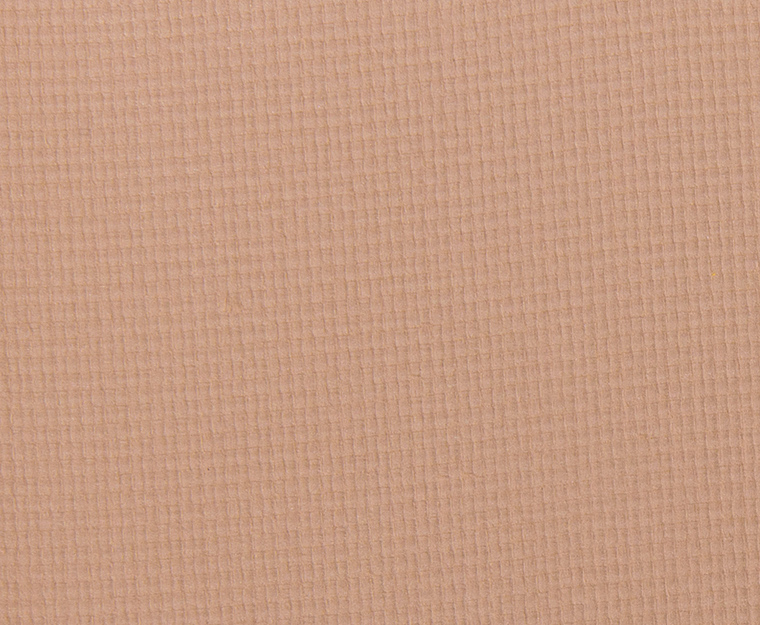
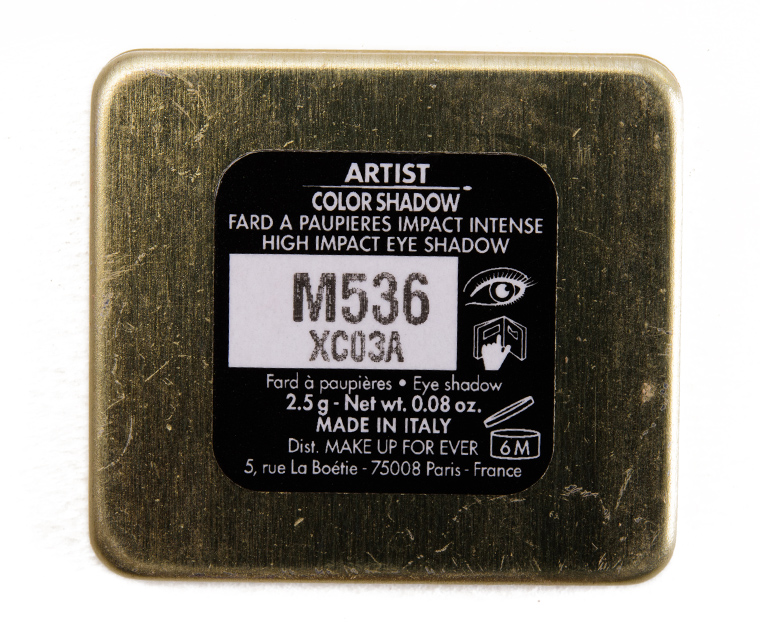
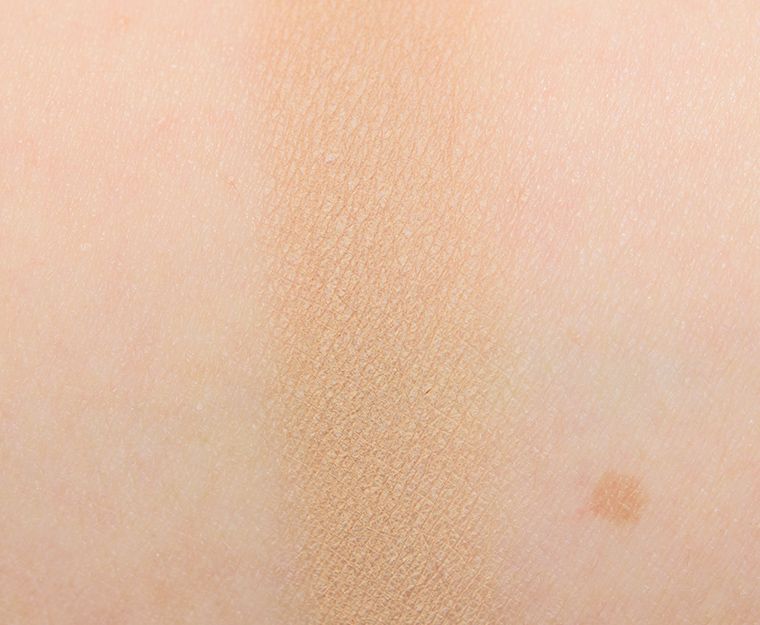








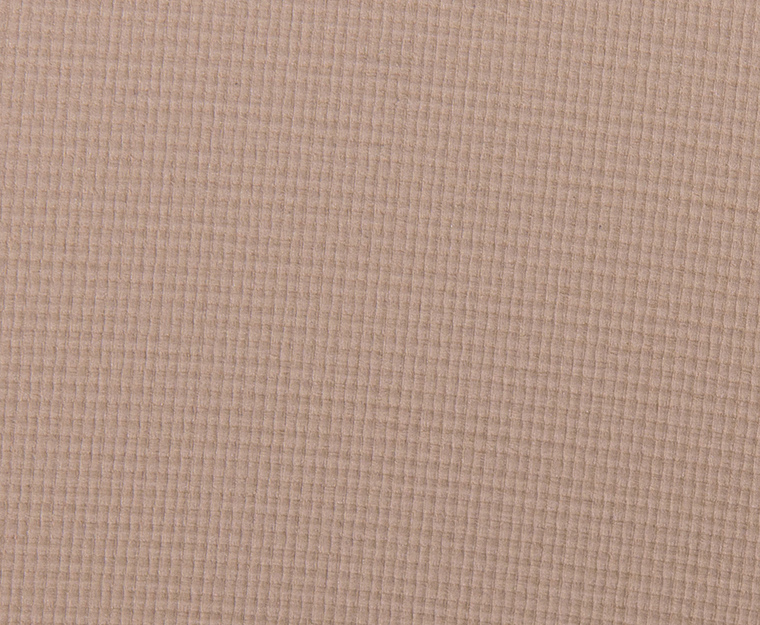
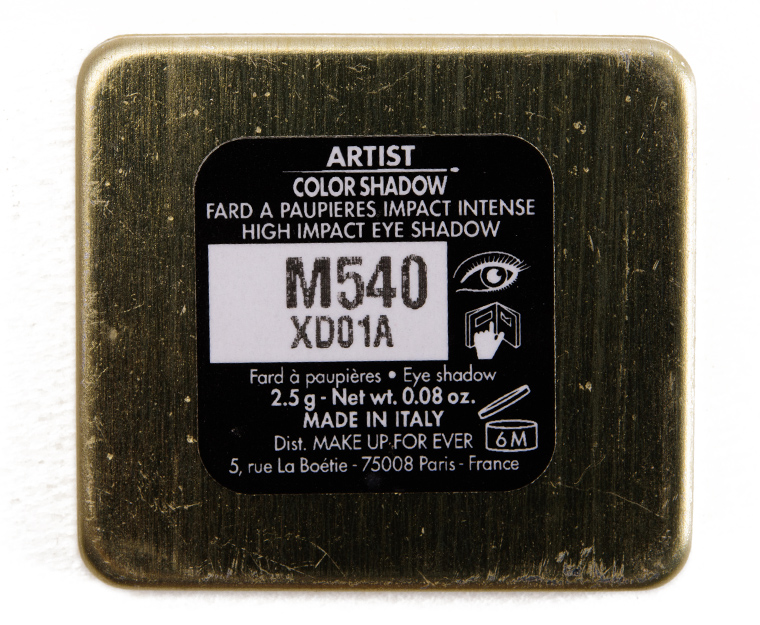
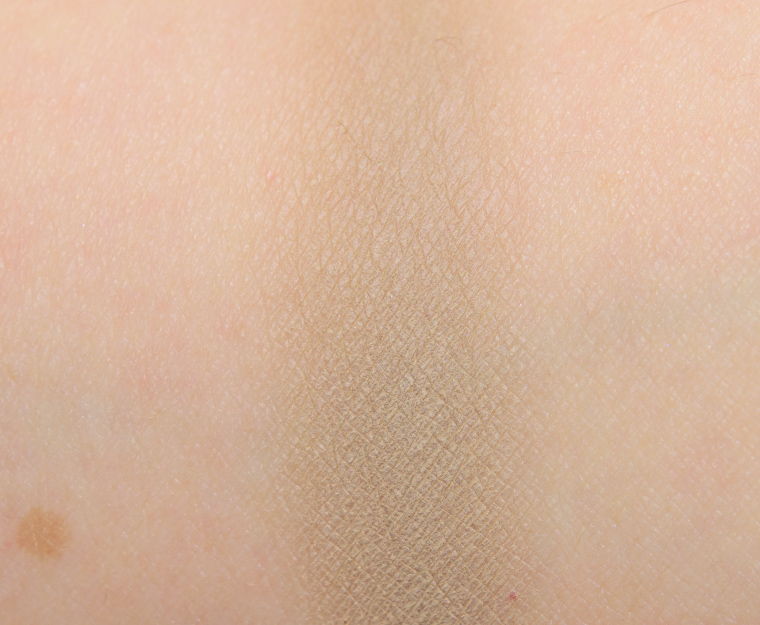






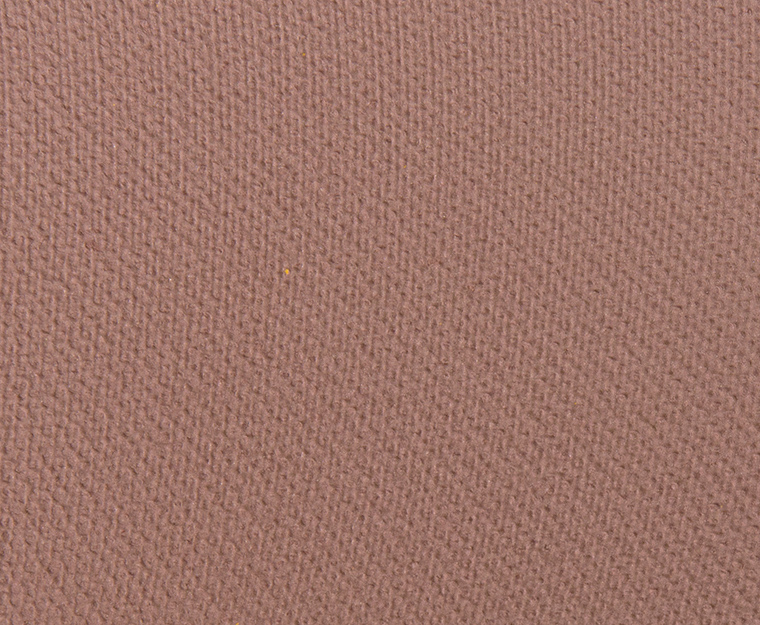
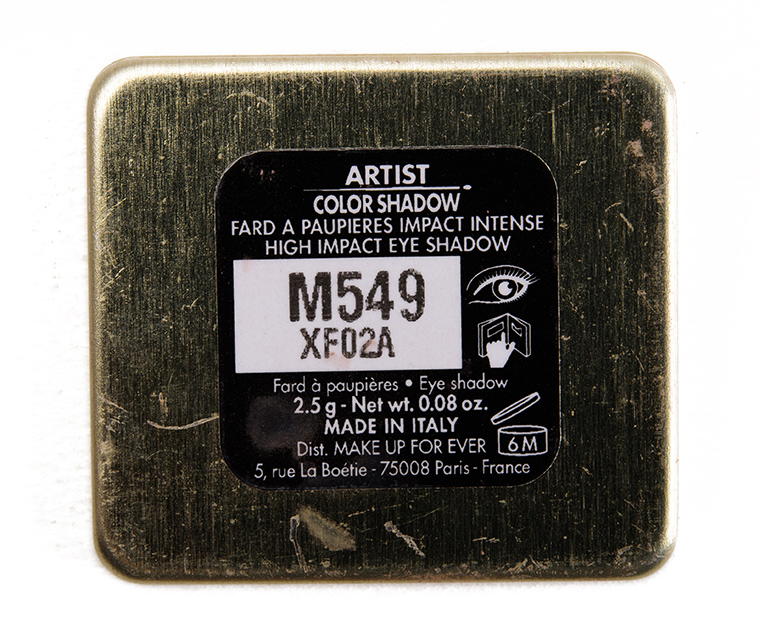
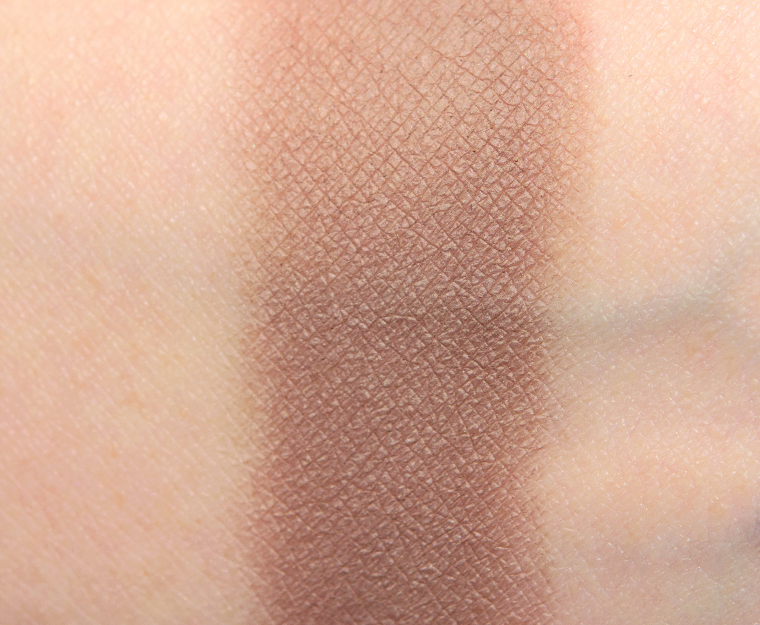






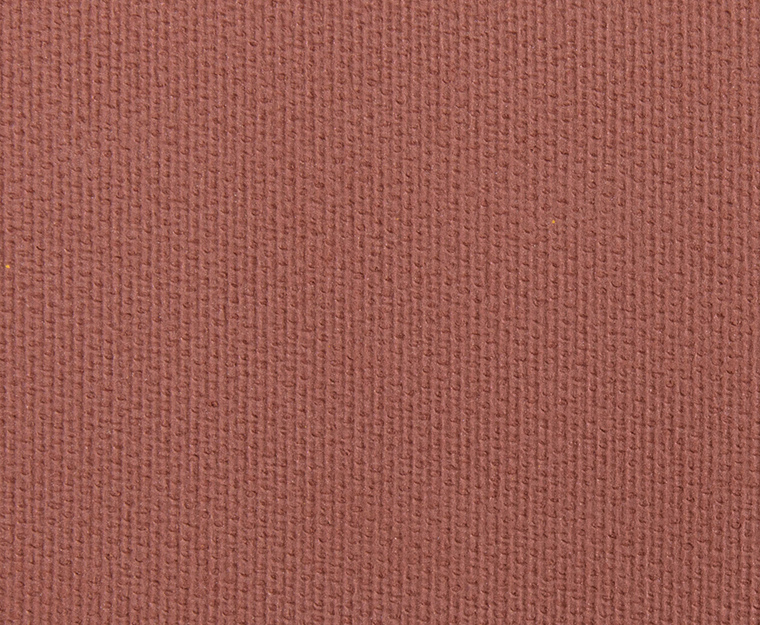
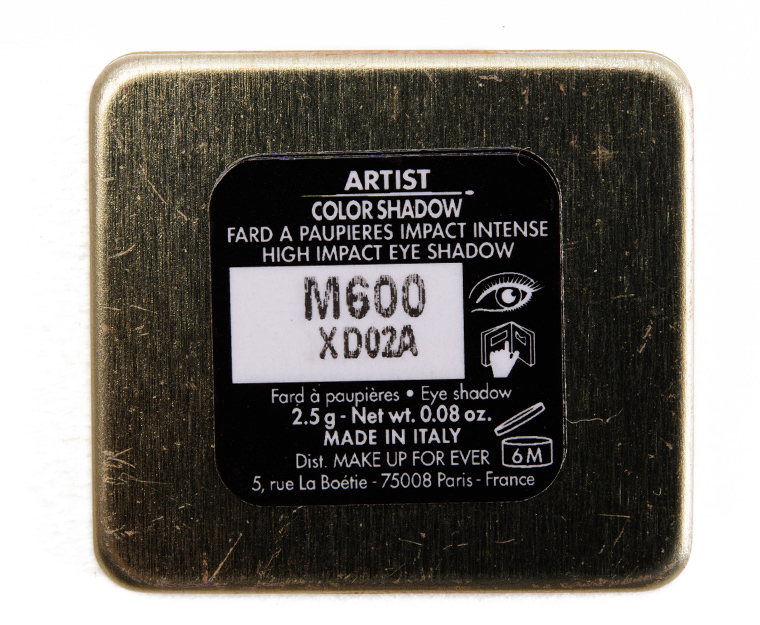
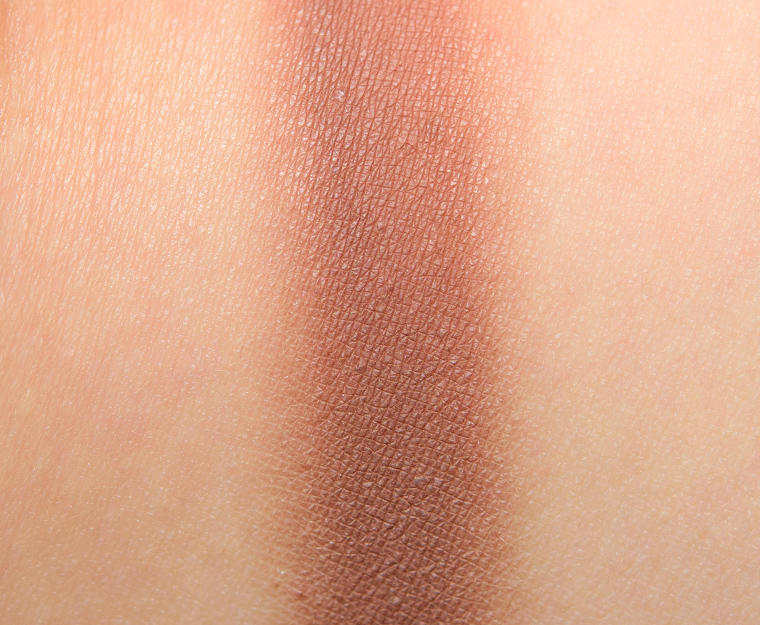






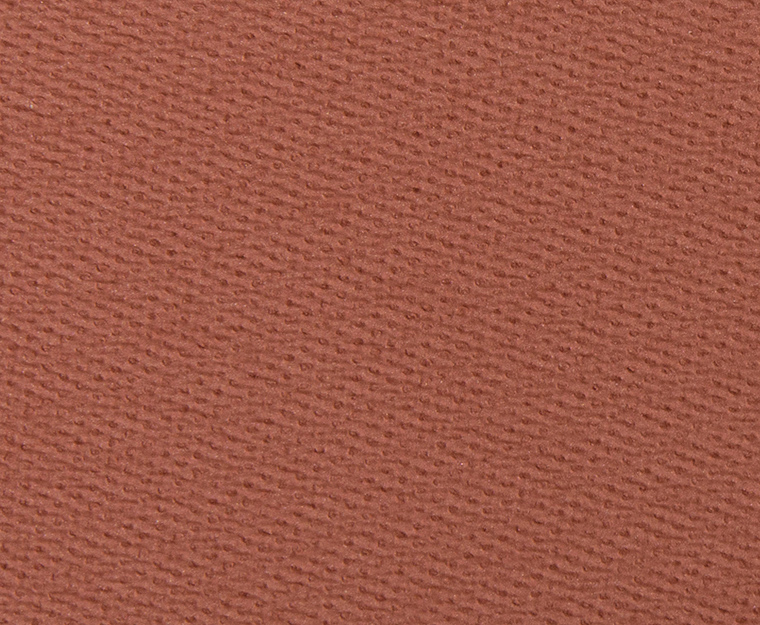
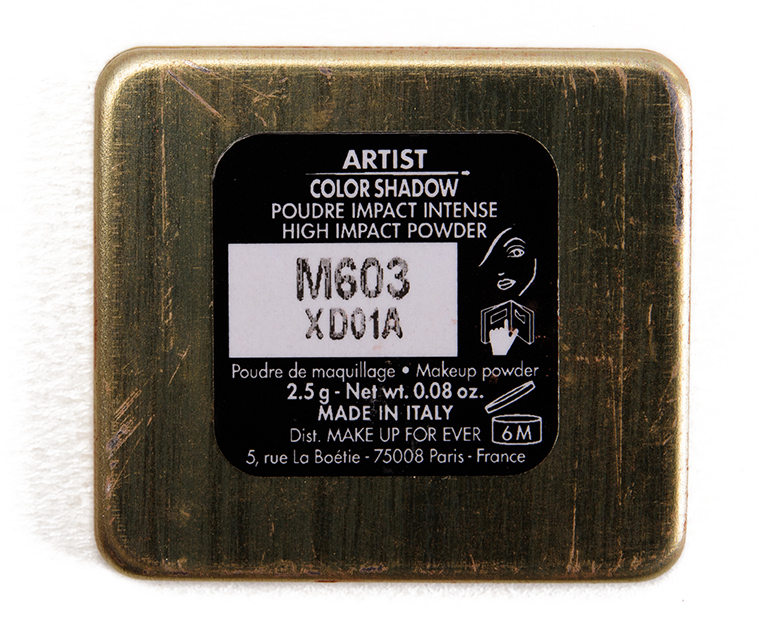
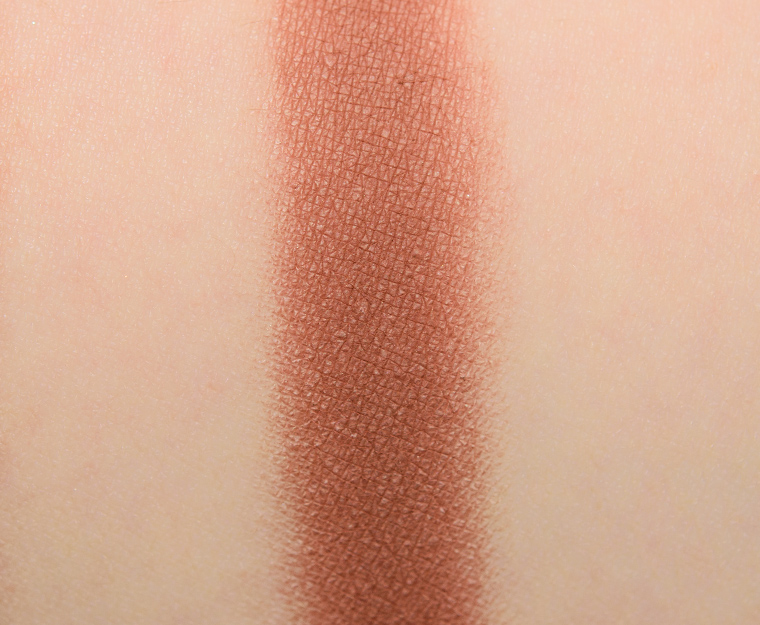






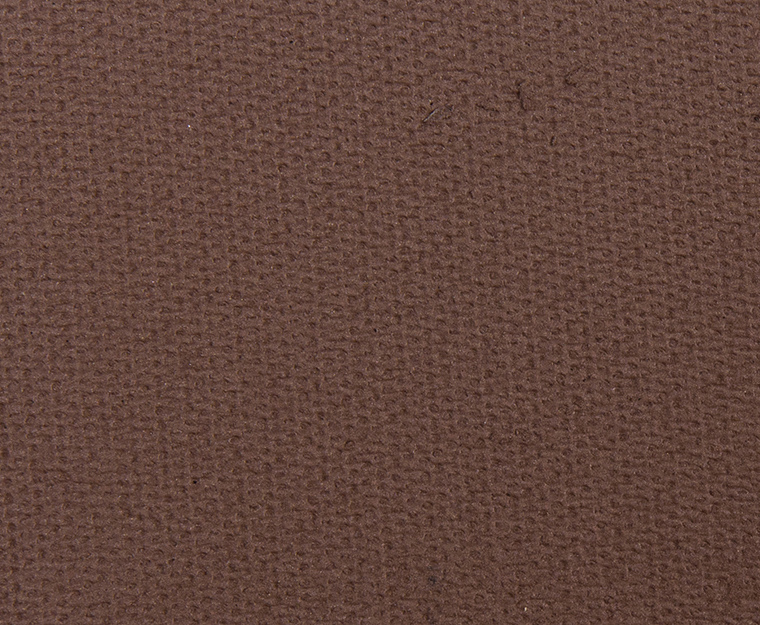
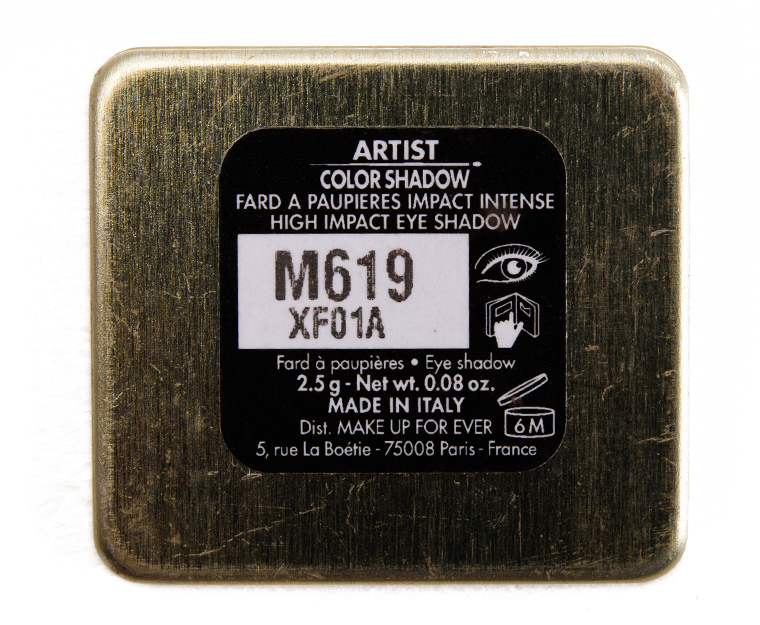
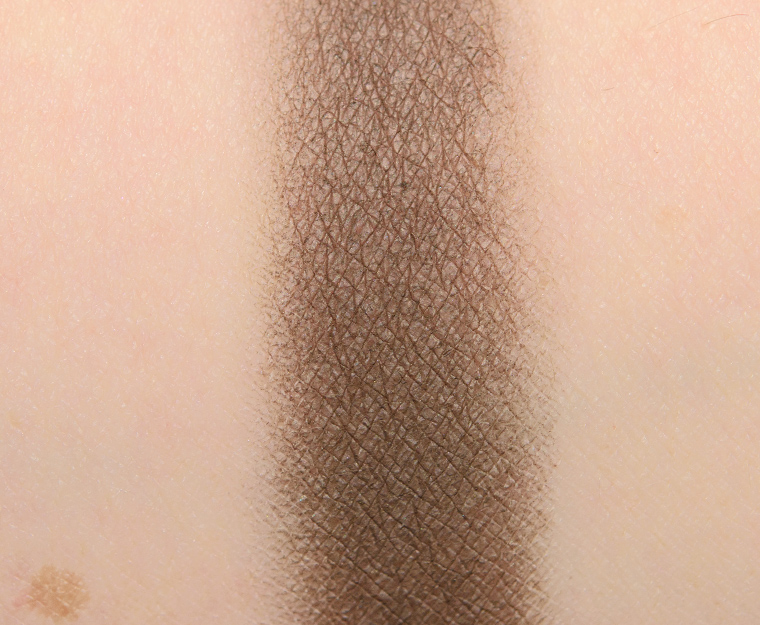


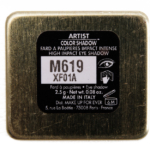
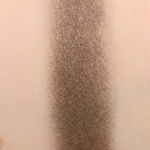
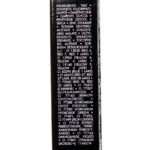










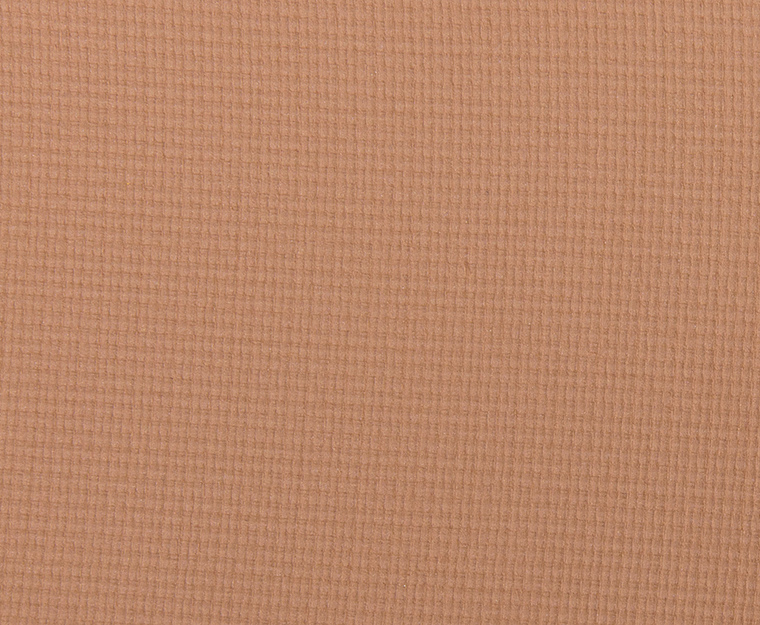
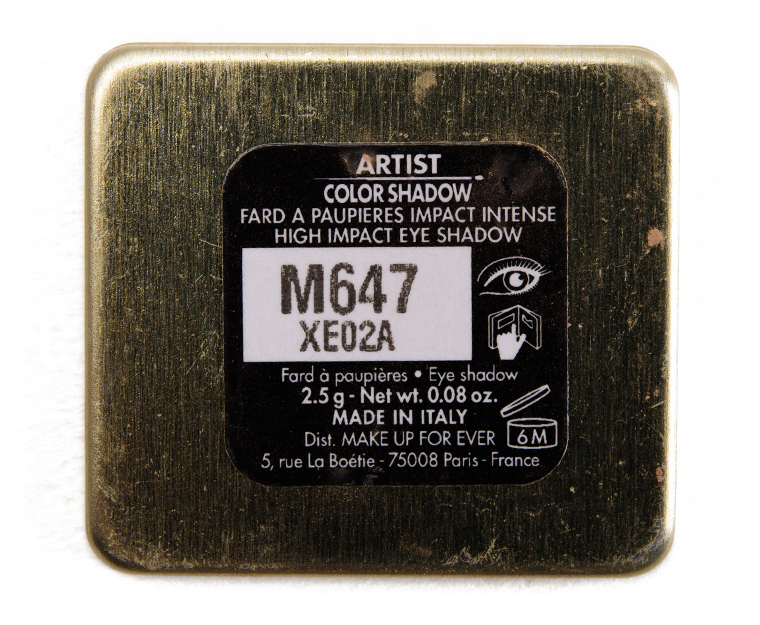
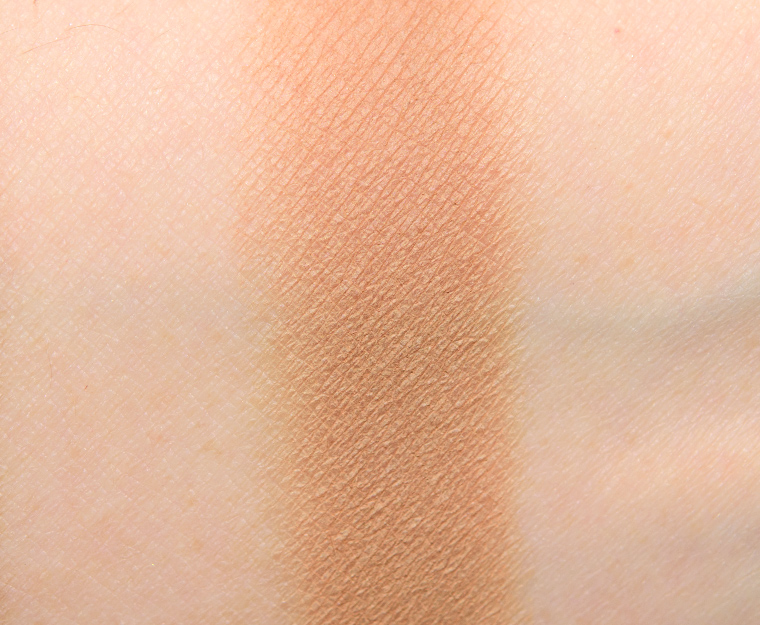






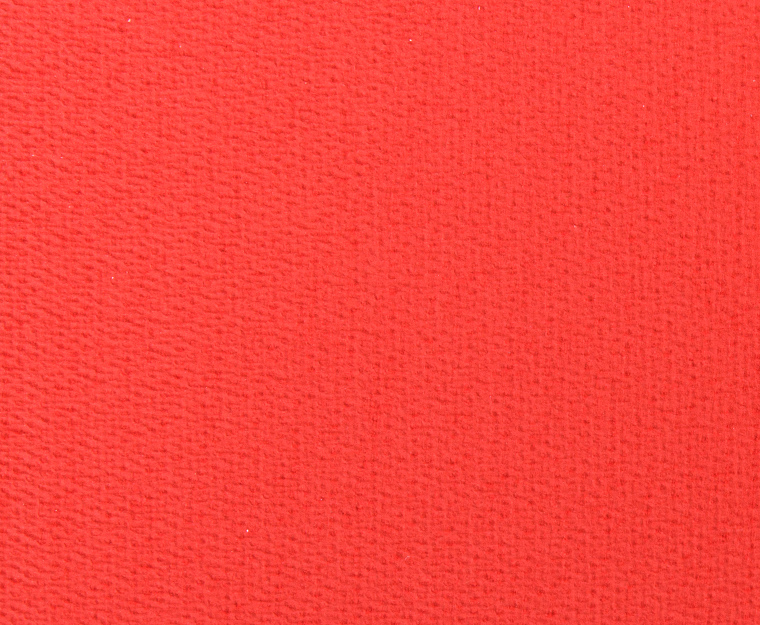
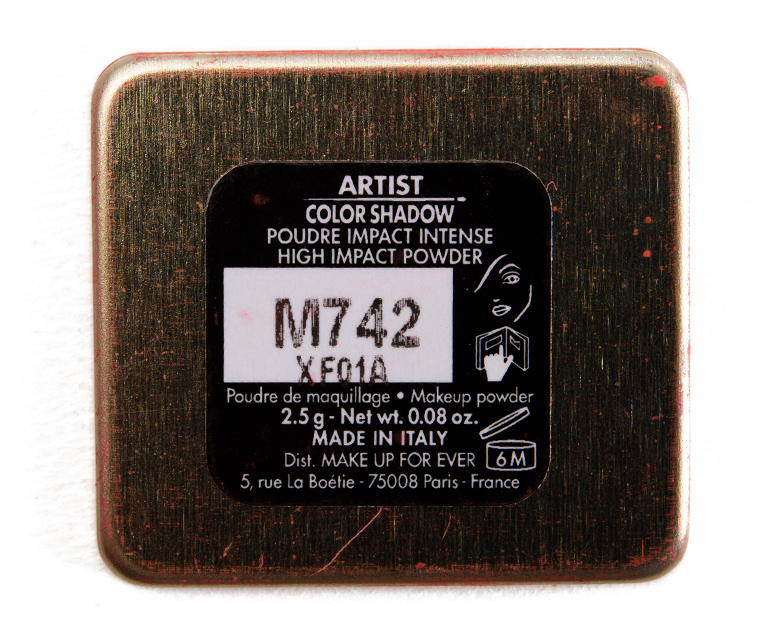
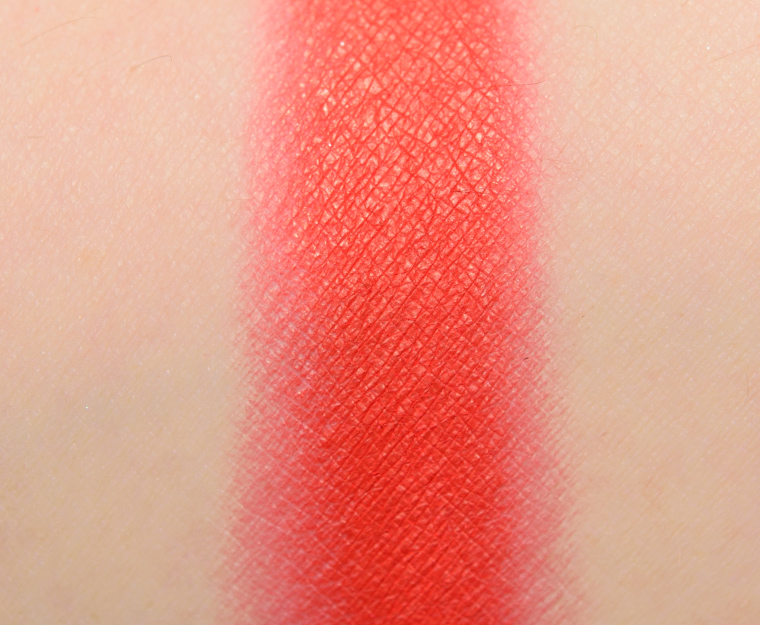






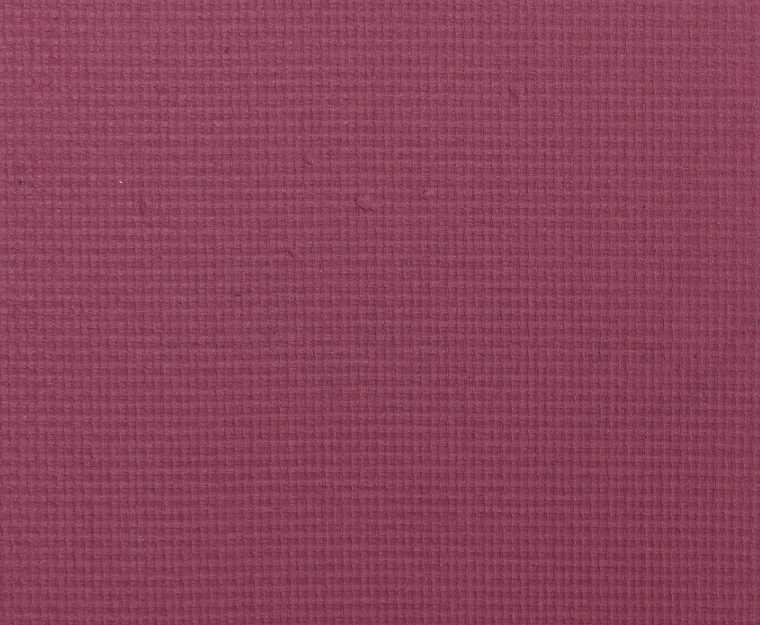
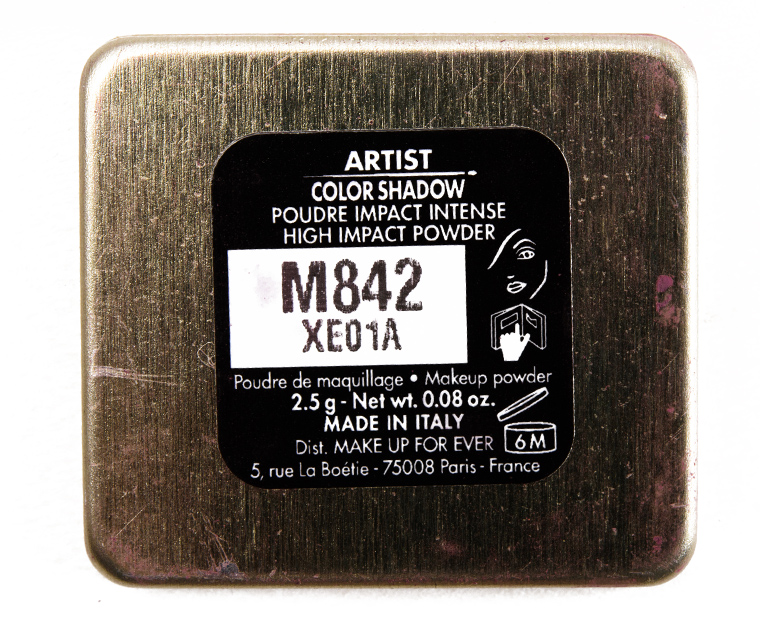
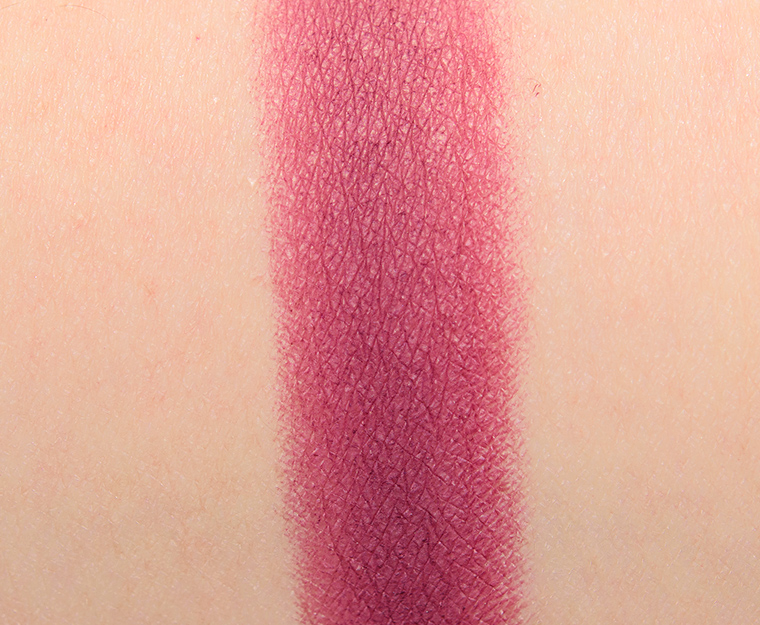






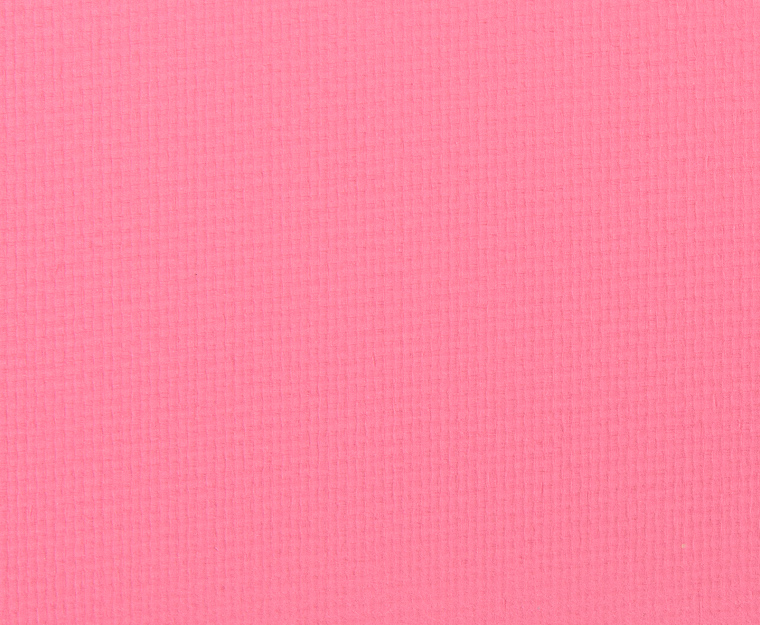
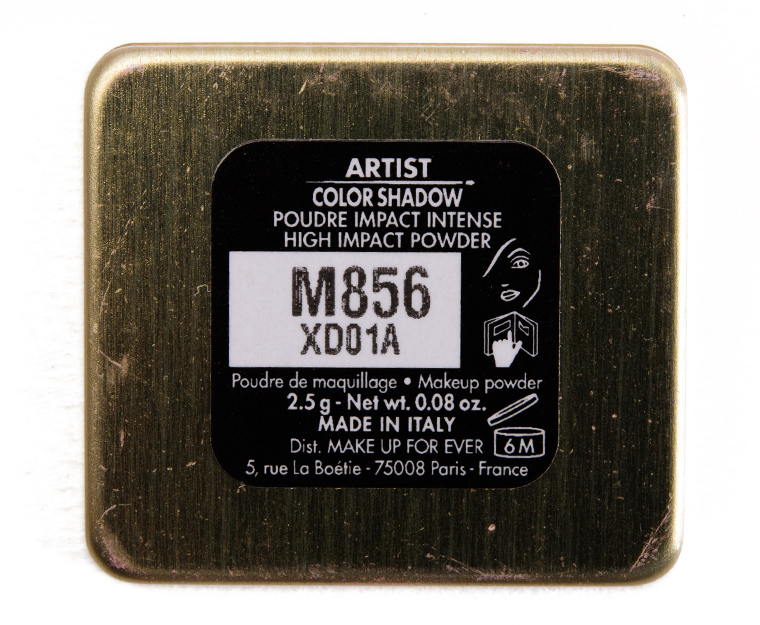
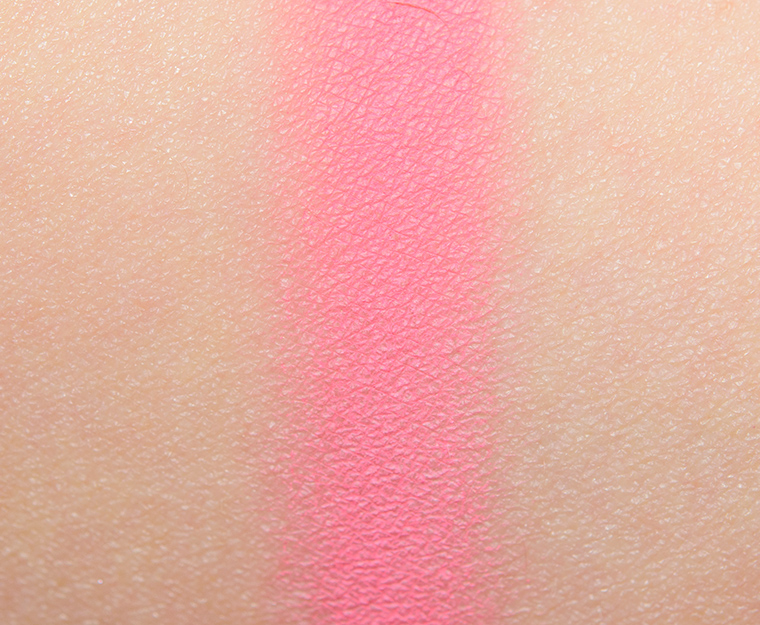






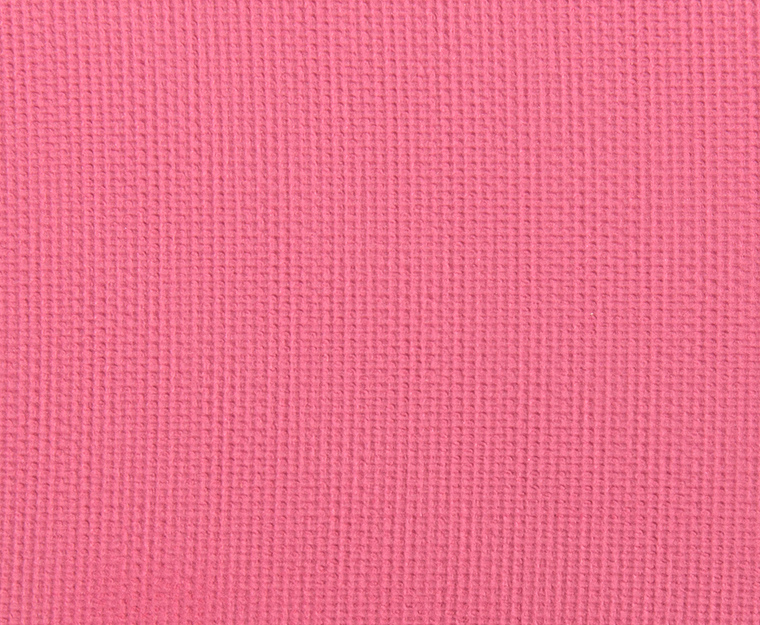
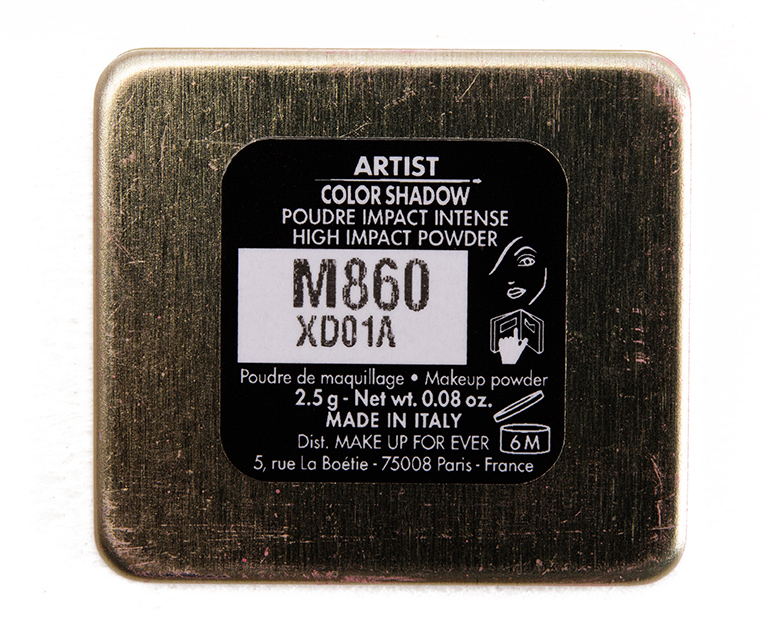
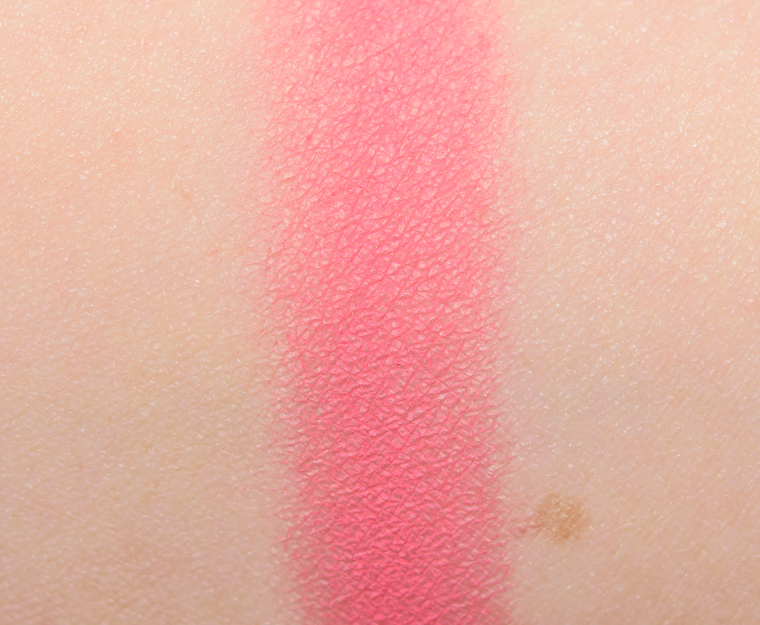






They didn’t continue Teak; am I right? This reformulation is an everlasting disappointment, the gift that keeps on not giving.
The OG Pink Brown and Speculoos were so much nicer looking than these revised versions. Same goes for Milk Tea.?
I guess I was hoping to be blown away by even just *one* shade here that I didn’t have any close dupes for. But, nope. Not really.
Hi Christine! Thank you so much for the side by side comparison links. It really helps. I did have a question. In the original Make Up For Ever artist shadow formula, there was a color called M-558 Dark Taupe. Is it the same color as the new formulation for the artist shadow in M-549 Dark Taupe? Thank you for all your hard work with getting these posts up so quickly!
It’s hard to know – it is similar but they are not exactly the same and yet that’s common throughout the range, so I’m not sure if it is intended to be the same or not.
https://www.temptalia.com/side-by-side/?sbs_1_search=Make+Up+For+Ever+M558+Dark+Taupe&sbs_1=171154&sbs_2_search=Make+Up+For+Ever+M549+Dark+Taupe&sbs_2=322446